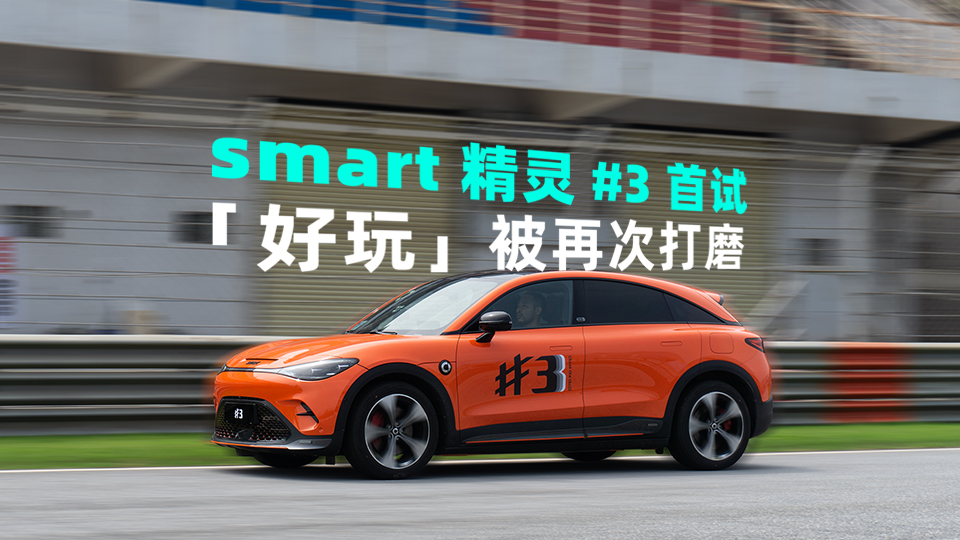I have always had a soft spot for small cars. Last July, I wanted to buy a pure electric mini car, but my reluctance to pre-order blindly made me miss out on the Smart Elf #1, and instead, I purchased a genuine two-compartment car—ID.3.
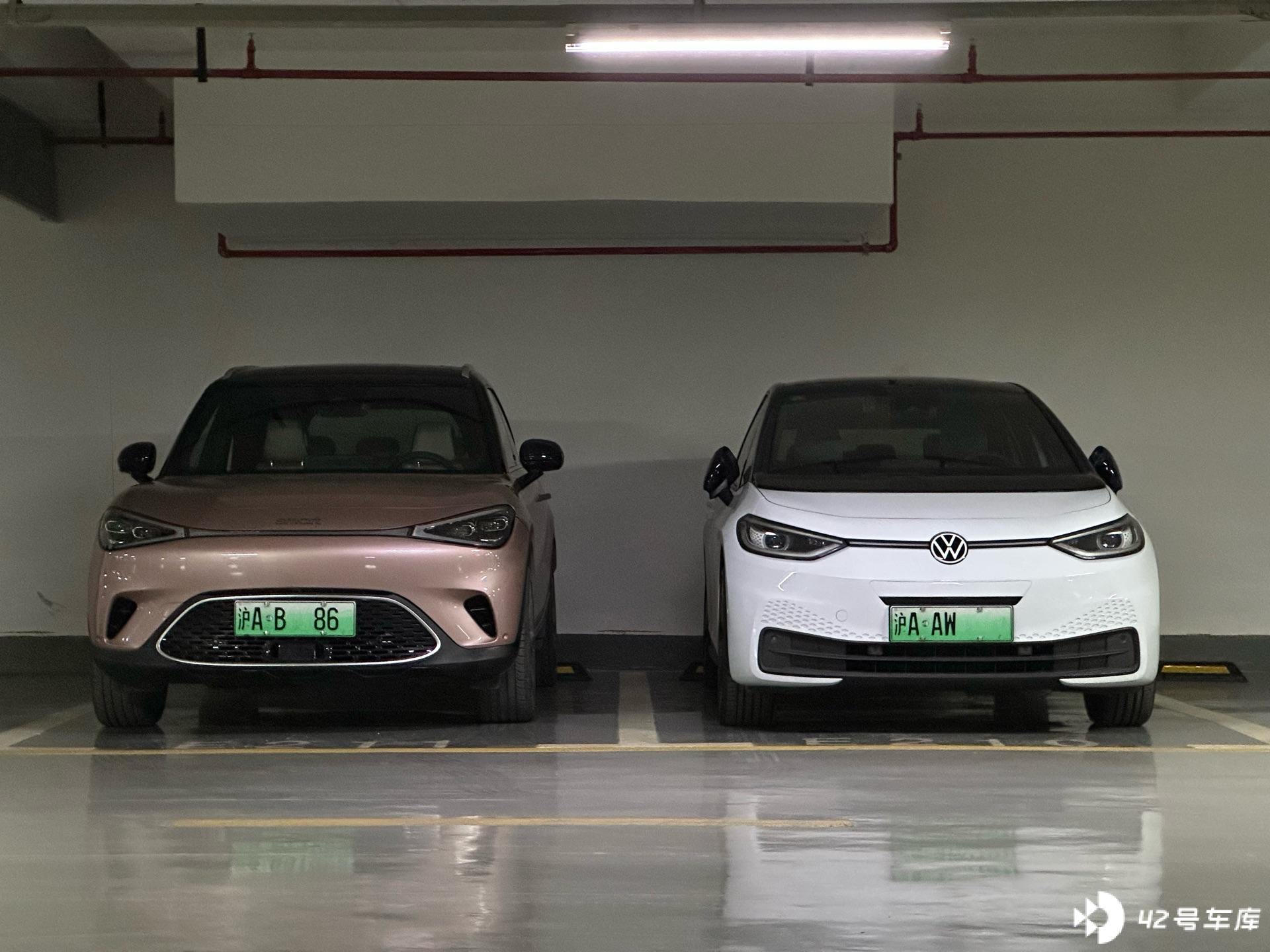
After learning about the merits of the Smart Elf #1, I kept convincing myself that the Elf #1 was a high chassis, high drag SUV, which gradually made me forget about the Smart option, until the Smart Elf #3 was released. Would such a sleek, crossover, and unique small car make me regret my decision?
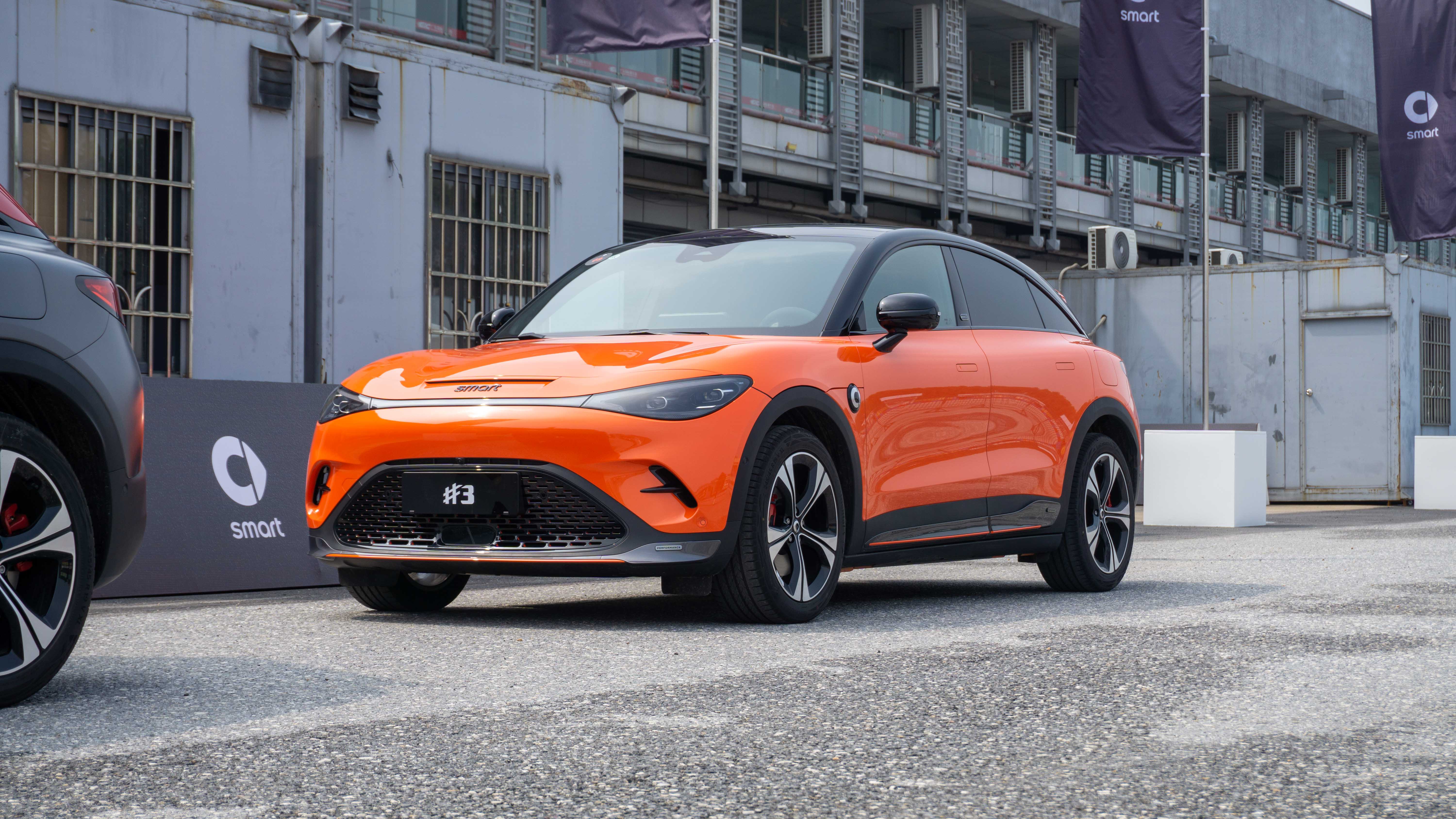
This time, I will face the Smart Elf #3 directly at the Guangdong International Circuit and urban roads, analyzing the racing experience and city road experience to determine what kind of small car the Smart Elf #3 really is.
The sleek Elf has arrived
The Smart Elf #3 can be considered as a sporty crossover version of the Elf #1, ditching the traditional square SUV rear and roof rack, and transforming into a sleek crossover SUV.
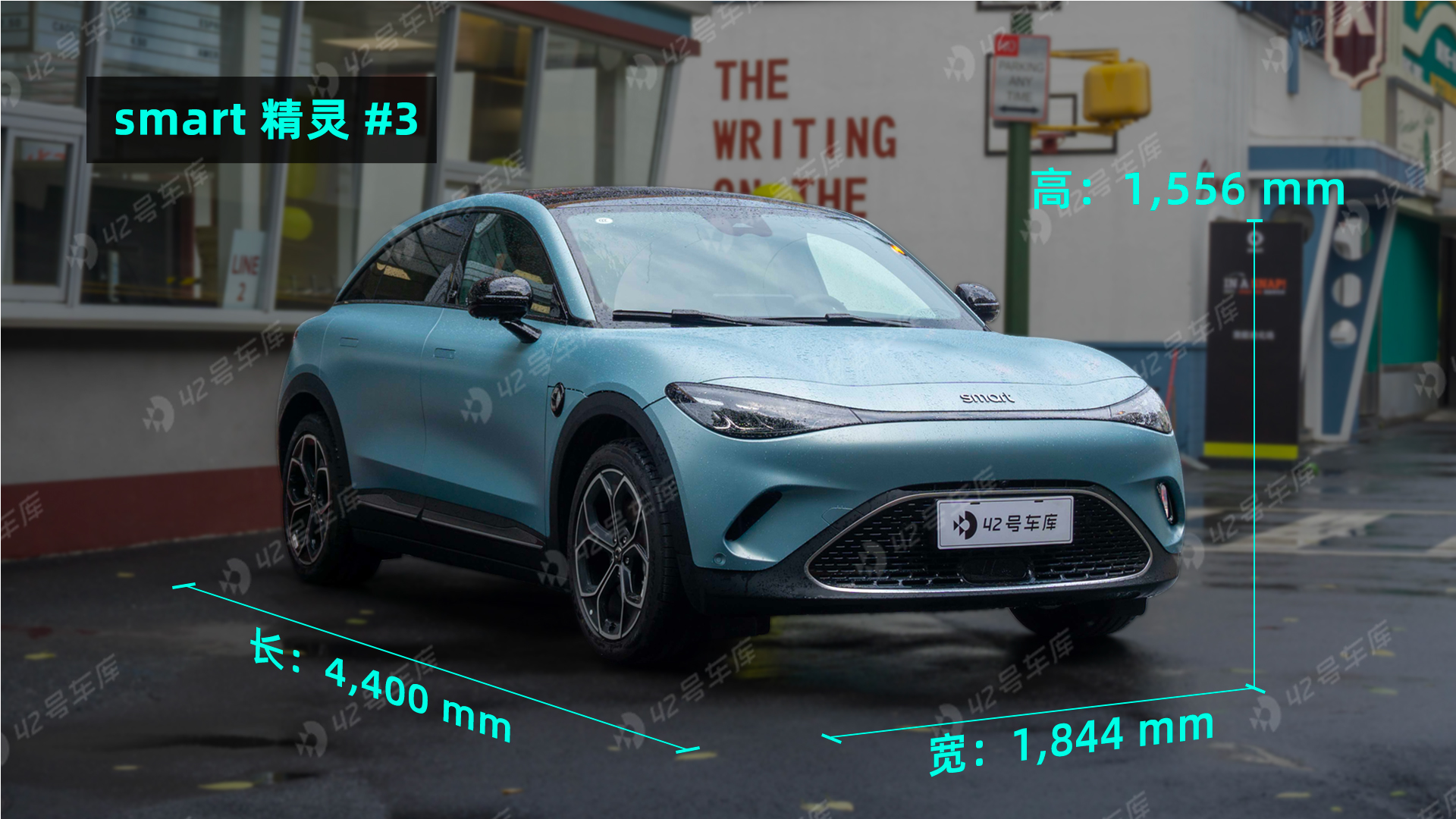
The dimensions of the Smart Elf #3 are 4,400 × 1,844 × 1,556 mm, with a wheelbase of 2,785 mm. Overall, it is slightly longer, wider, and more flattened compared to the Elf #1, creating a low-profile hatchback feel.
The front of the Smart Elf #3 hasn’t changed much from the Elf #1, featuring the same Y-shaped penetrating daytime running lights and a large mouth at the bottom. The main appearance features have not changed significantly, and it can be easily identified as a pure electric Smart from a distance.
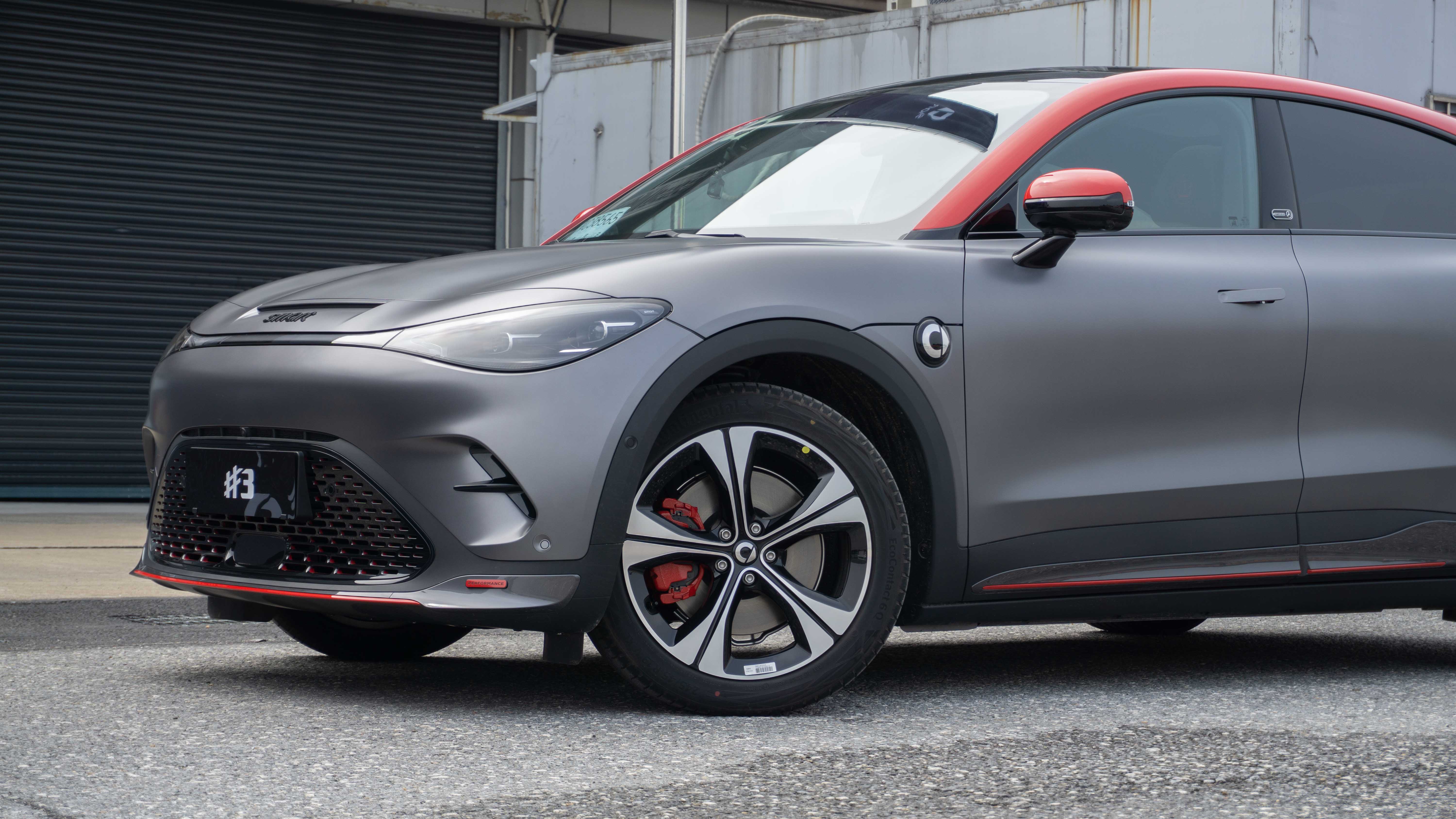
Upon reaching the side and rear, the Elf #3’s sleek design further emphasizes the youthful and sporty nature of this small car. As a sleek SUV, the overall lines of Elf #3 are extremely smooth and continuous, giving it a closer resemblance to a hatchback than the #1.
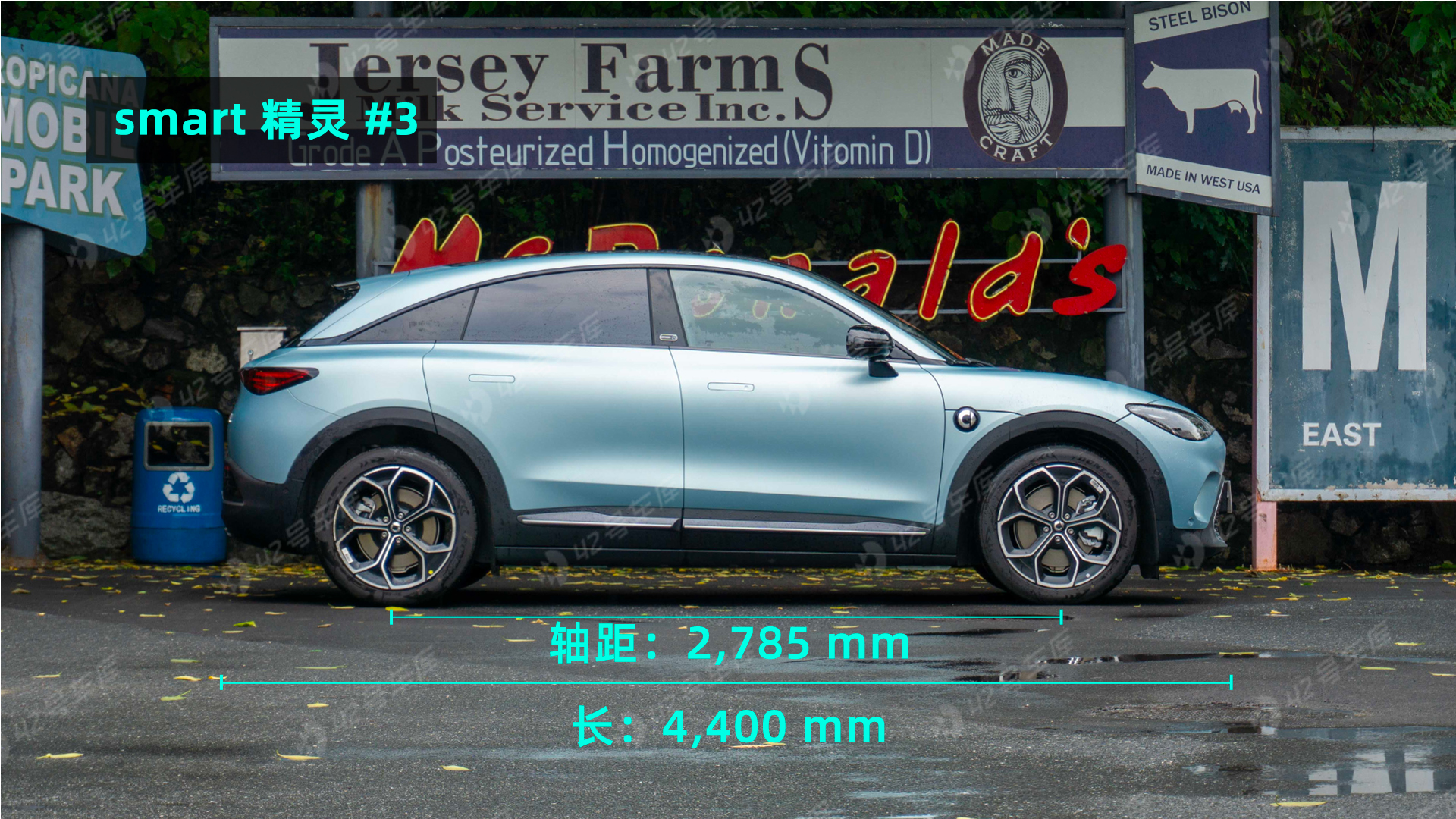 Especially when looking at the curve from the A-pillar to the C-pillar, it is a continuous flow along the roof that extends and sweeps downward from the B-pillar, giving the car a visually sleek and elegant appearance. Moreover, a floating roof design is adopted, with black accents at the connecting points between the lower edges of the A and C-pillars and the body.
Especially when looking at the curve from the A-pillar to the C-pillar, it is a continuous flow along the roof that extends and sweeps downward from the B-pillar, giving the car a visually sleek and elegant appearance. Moreover, a floating roof design is adopted, with black accents at the connecting points between the lower edges of the A and C-pillars and the body.
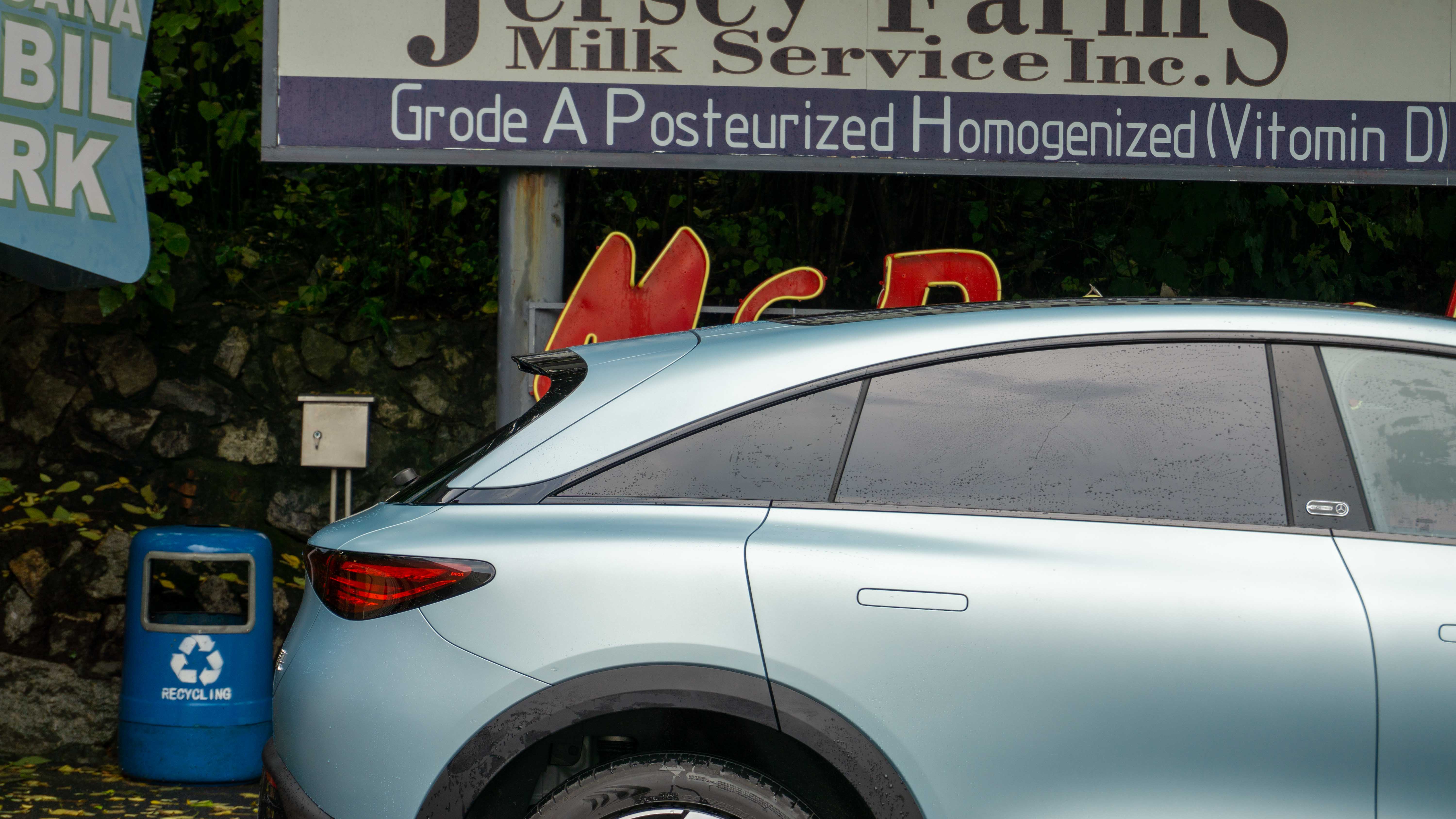
Apart from having a roof color that matches the body paint, you can also opt for contrasting colors as seen on Essence #1, which enhances the car’s recognizability. It makes your car particularly easy to spot in a parking lot just by looking at the color combination.
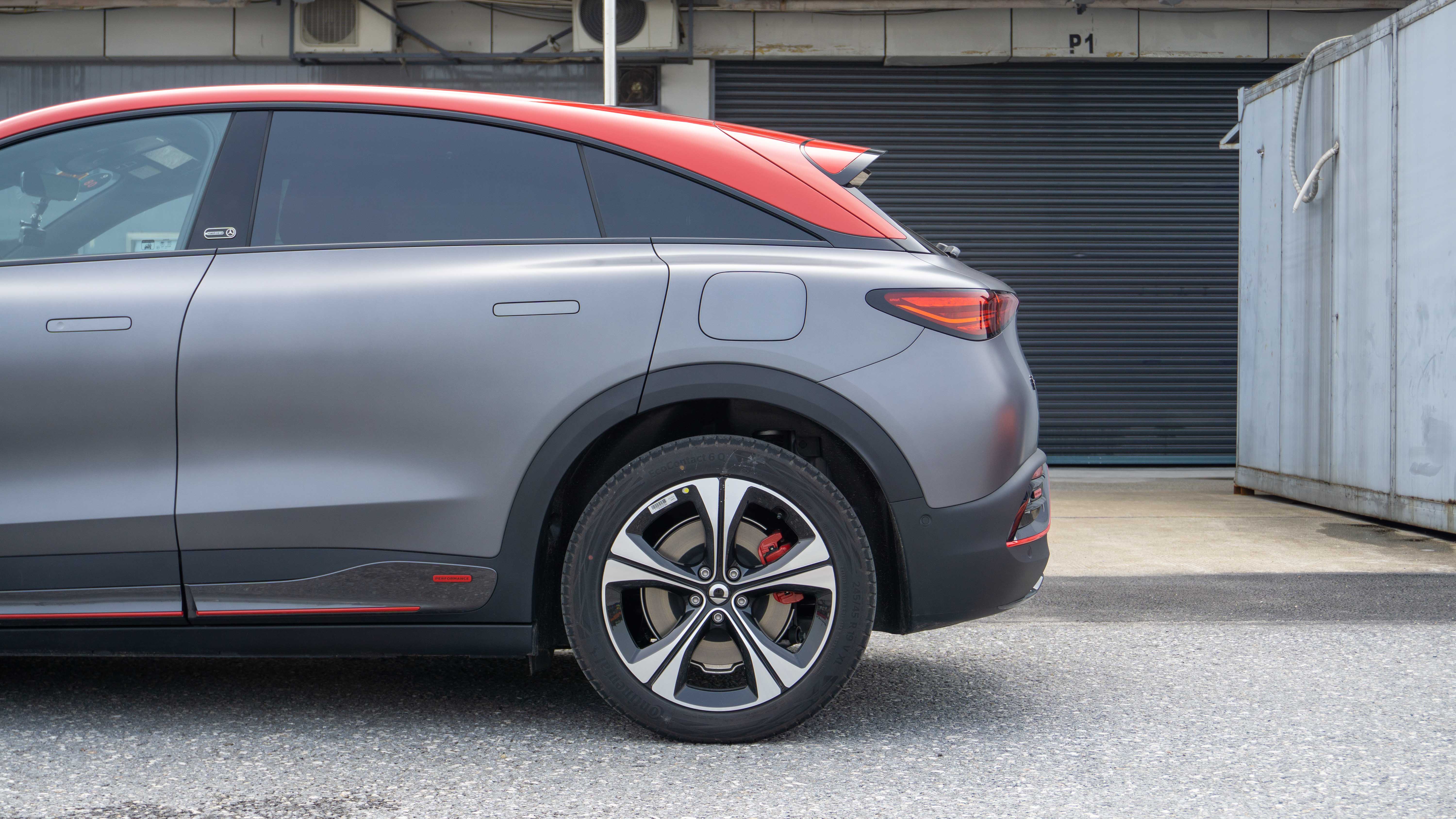
With the adoption of the fastback design, the illuminated logo, which was initially on the D-pillar, has been relocated to the front fender, retaining the fun and interesting details that are a trademark of smart cars.
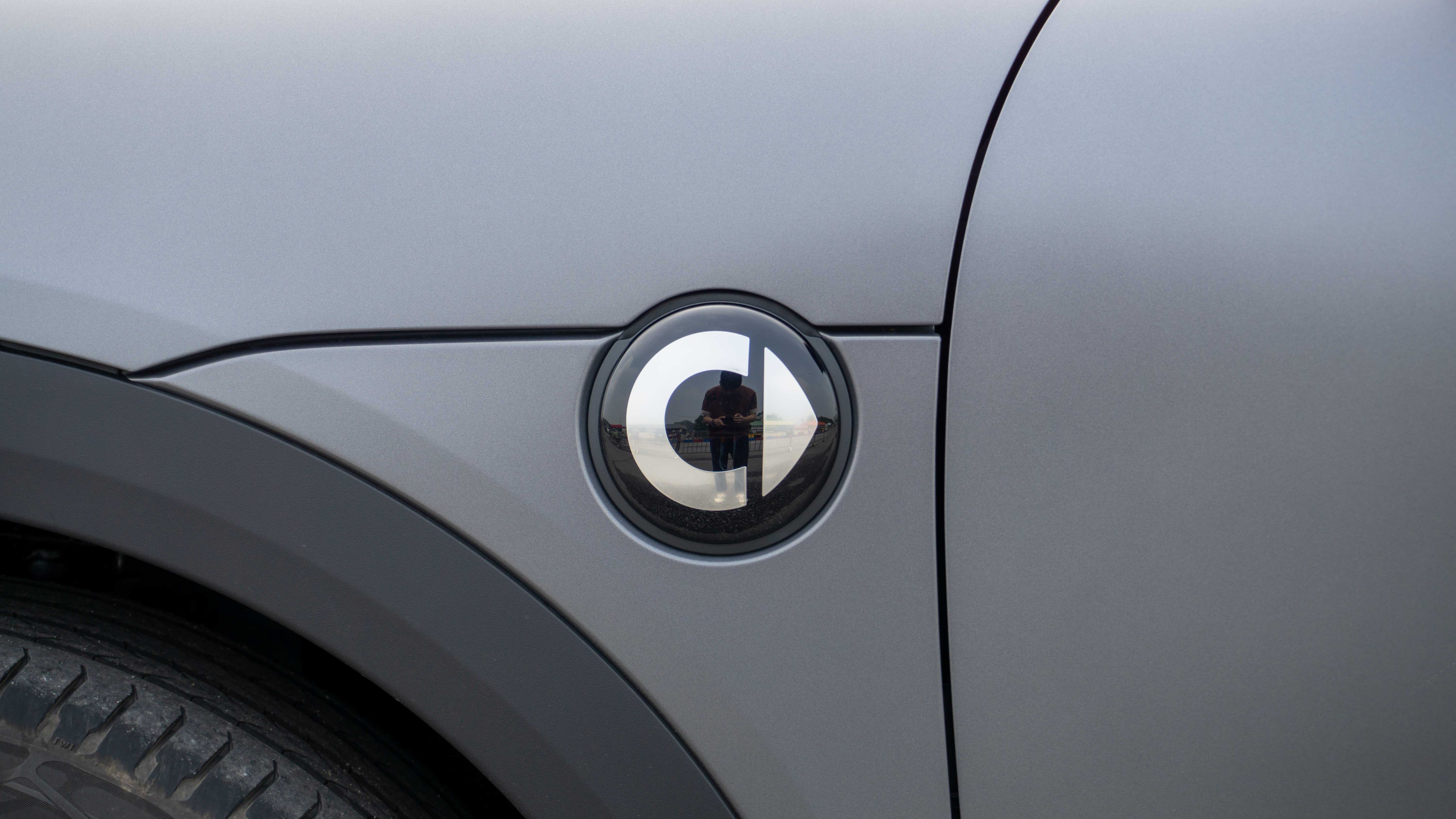
There are two wheel designs for the smart Essence #3. The base model comes with petal-shaped, sporty-looking 5-spoke wheels, while the BRABUS edition features a more common 5-spoke design, with optional 20-inch wheels available as an upgrade.
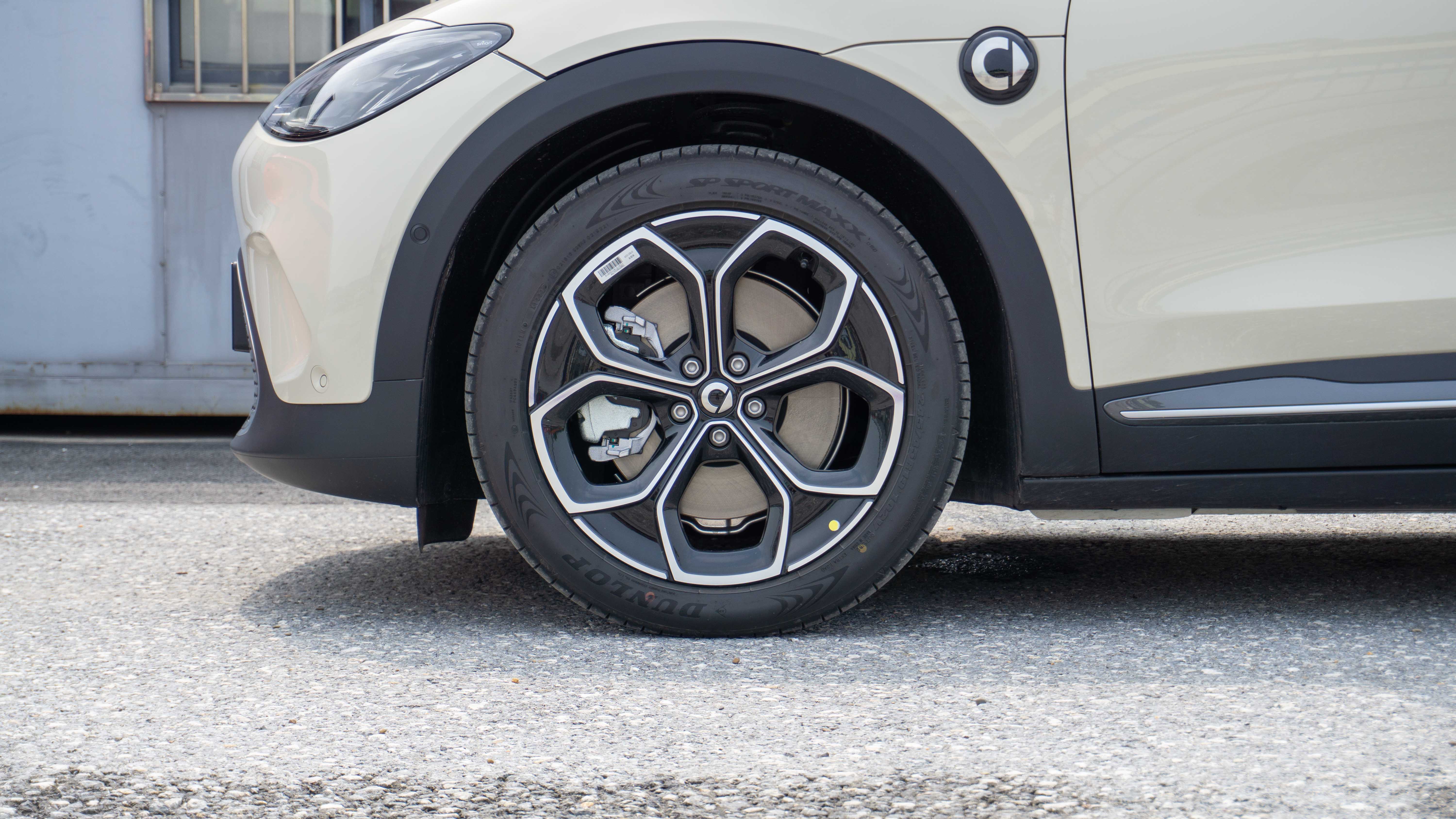
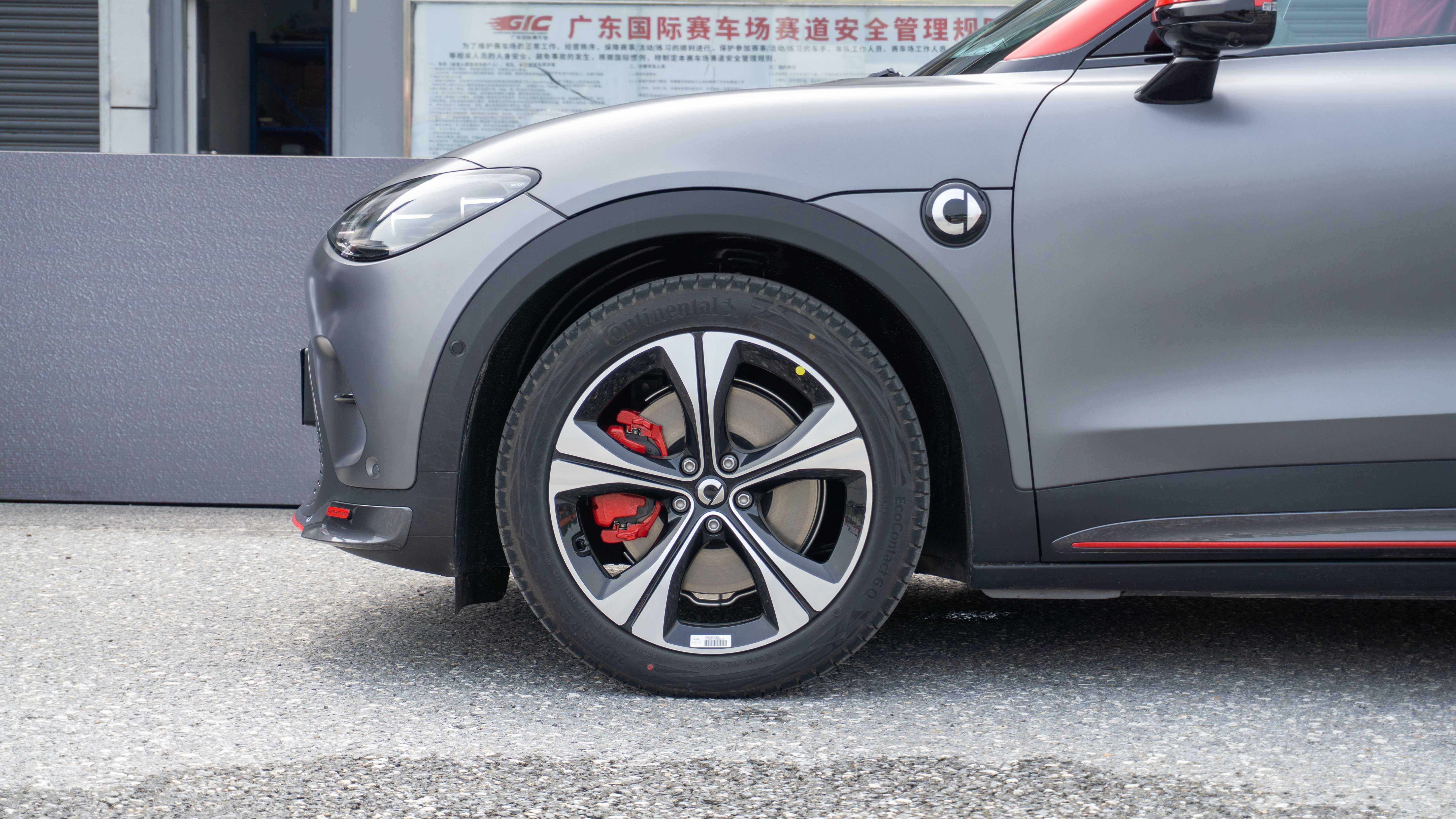
The matching tires for both base and BRABUS models are sized 245/45 R19, with the same standard for both front and rear wheels—quite generous for a compact car. The rear-wheel-drive edition comes fitted with Dunlop SP Sport Maxx tires, which are all-round performers.
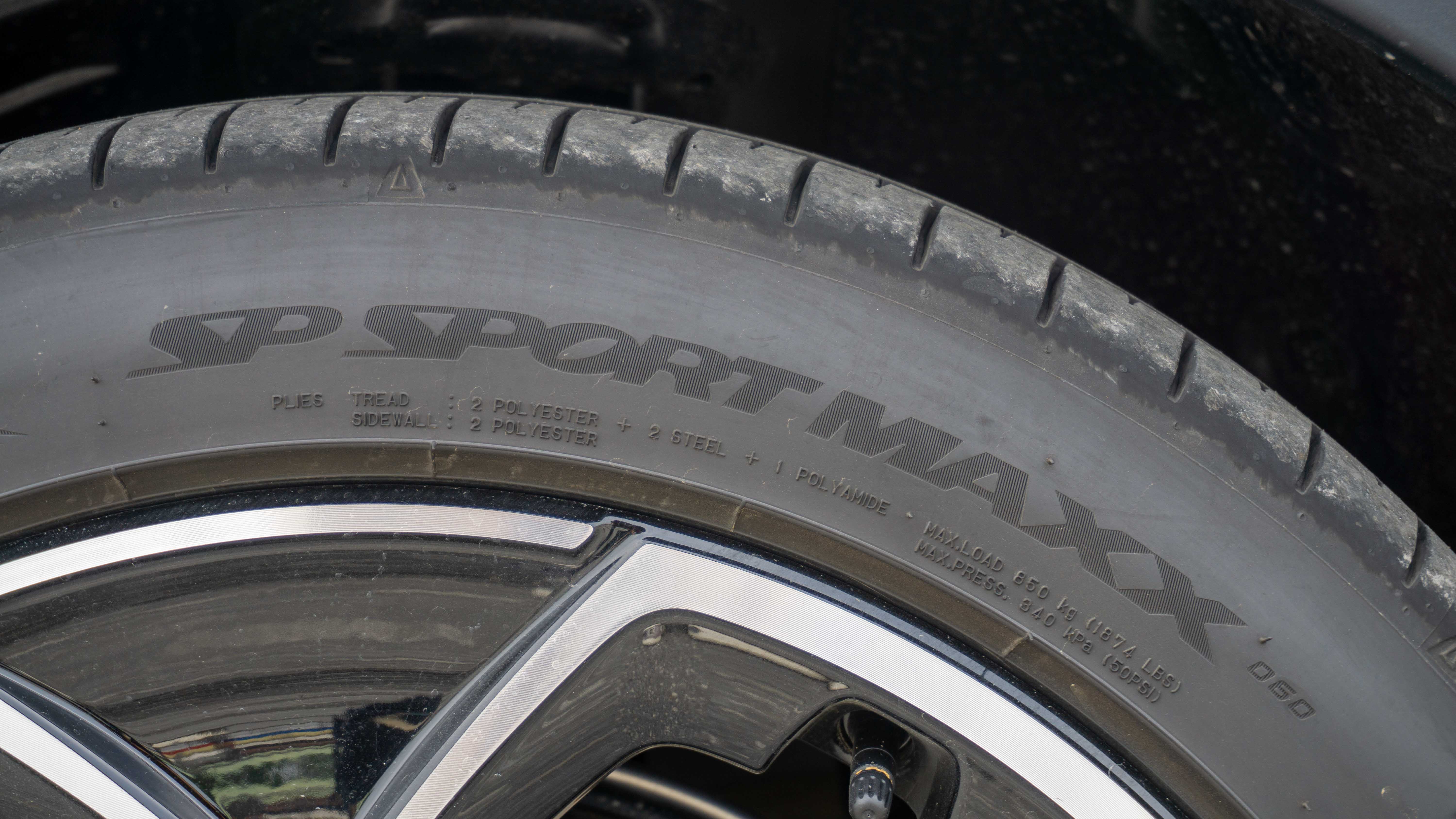
The BRABUS edition uses Continental EcoContact 6 tires for enhanced energy efficiency, comfort, and handling.
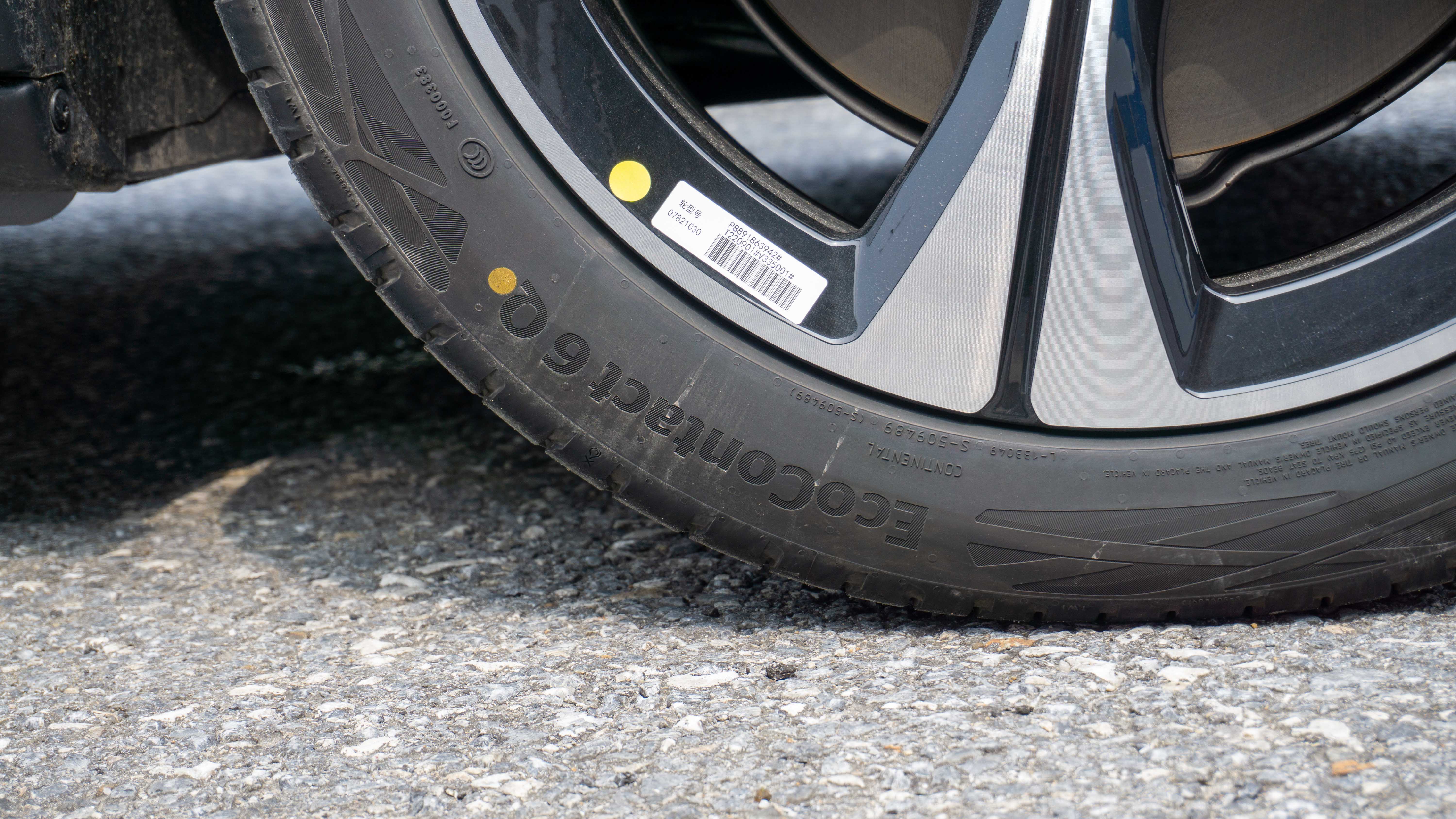
With the fastback body style, the roofline of the smart Essence #3 extends seamlessly to the rear spoiler, and the BRABUS edition features a longer, sportier spoiler.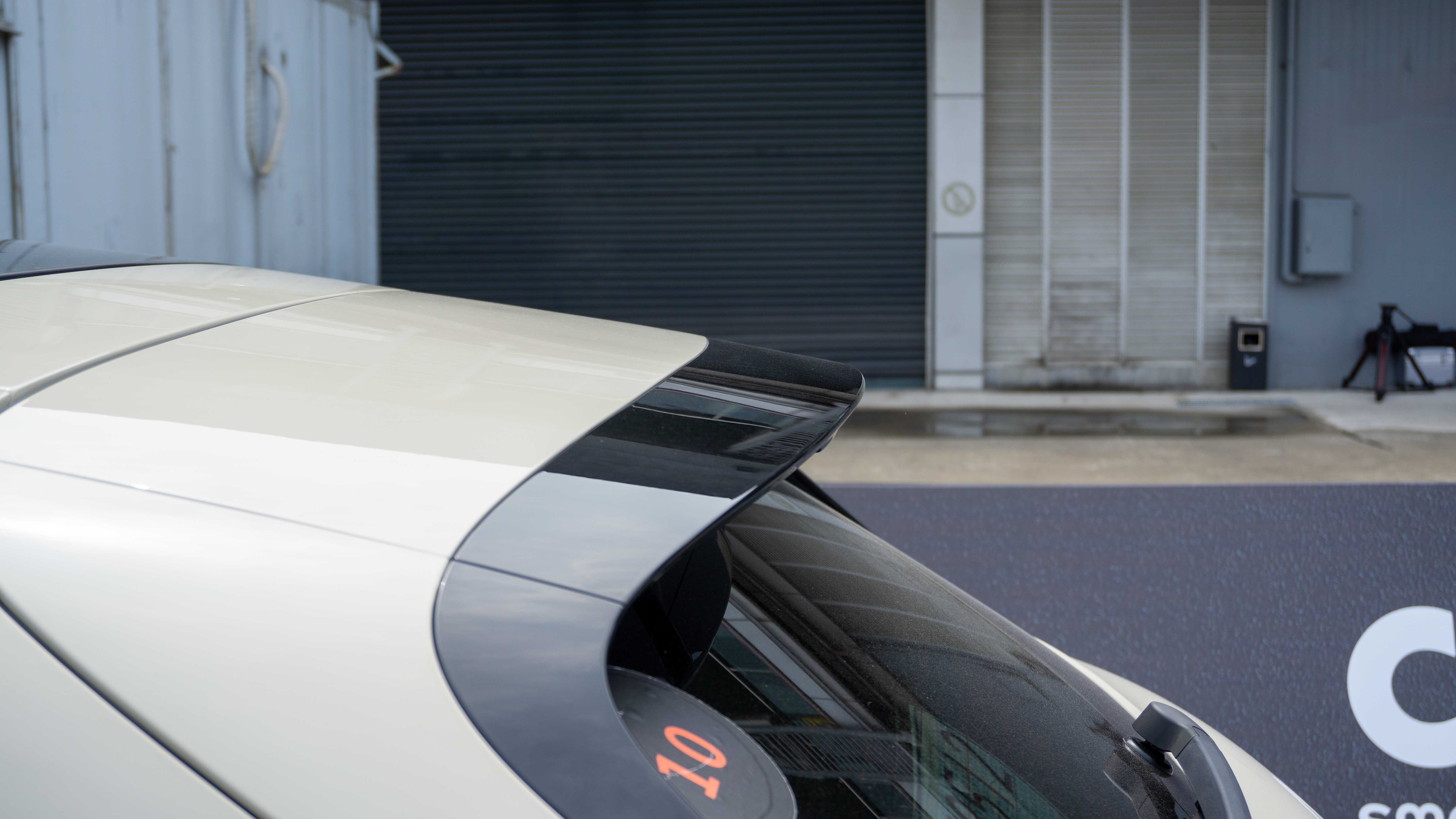
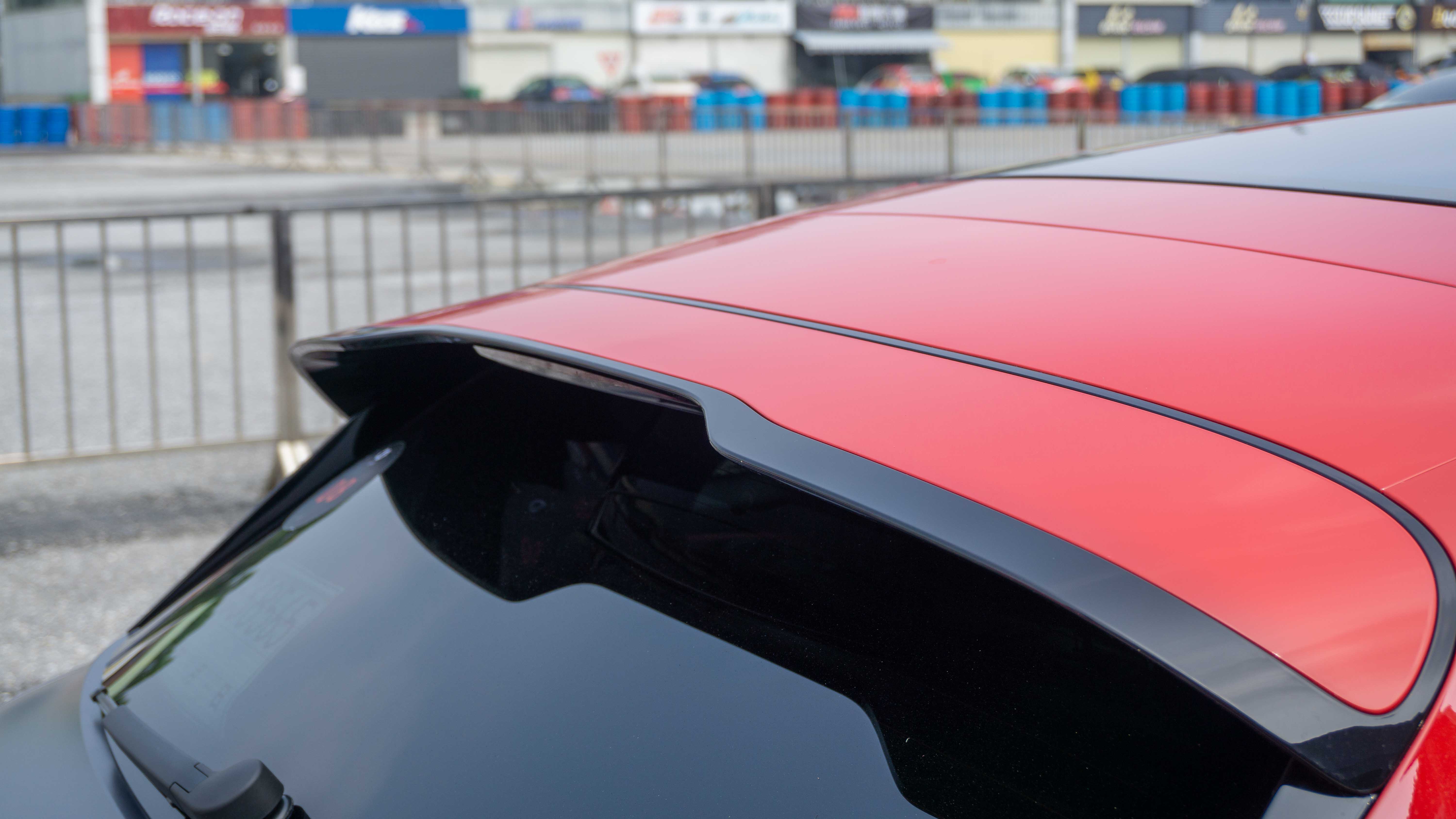
Additionally, the active air intake grille, front air curtain, front wheel windbreak, rear diffuser, and sporty spoiler contribute to a reduced drag coefficient of 0.27, which positively benefits range, acceleration, and NVH.

The rear end of the smart Sprite #3 looks like a flattened Sprite #1, with slimmer taillights that visually elongate its width, giving Sprite #3 a sportier appearance.
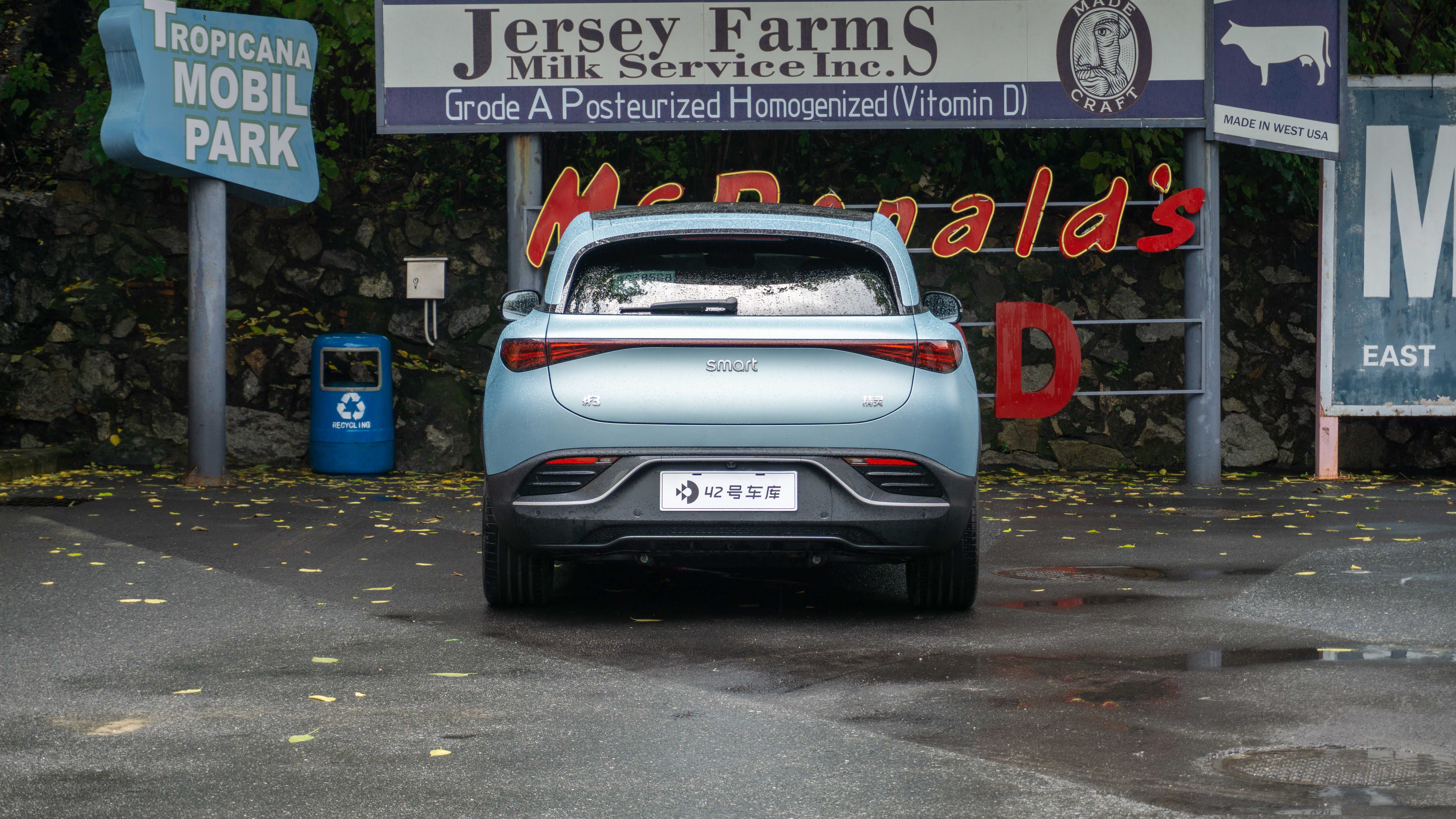
Overall, the striking smart Sprite #3 exudes an assertive hot-hatch demeanor. For those interested in a compact, all-electric vehicle with distinct character, the Sprite #3’s distinctive and crossover-style design makes it an appealing choice.
Interior Crafted from the Same Mold
The sporty transformation extends to the cabin of the smart Sprite #3 as well.
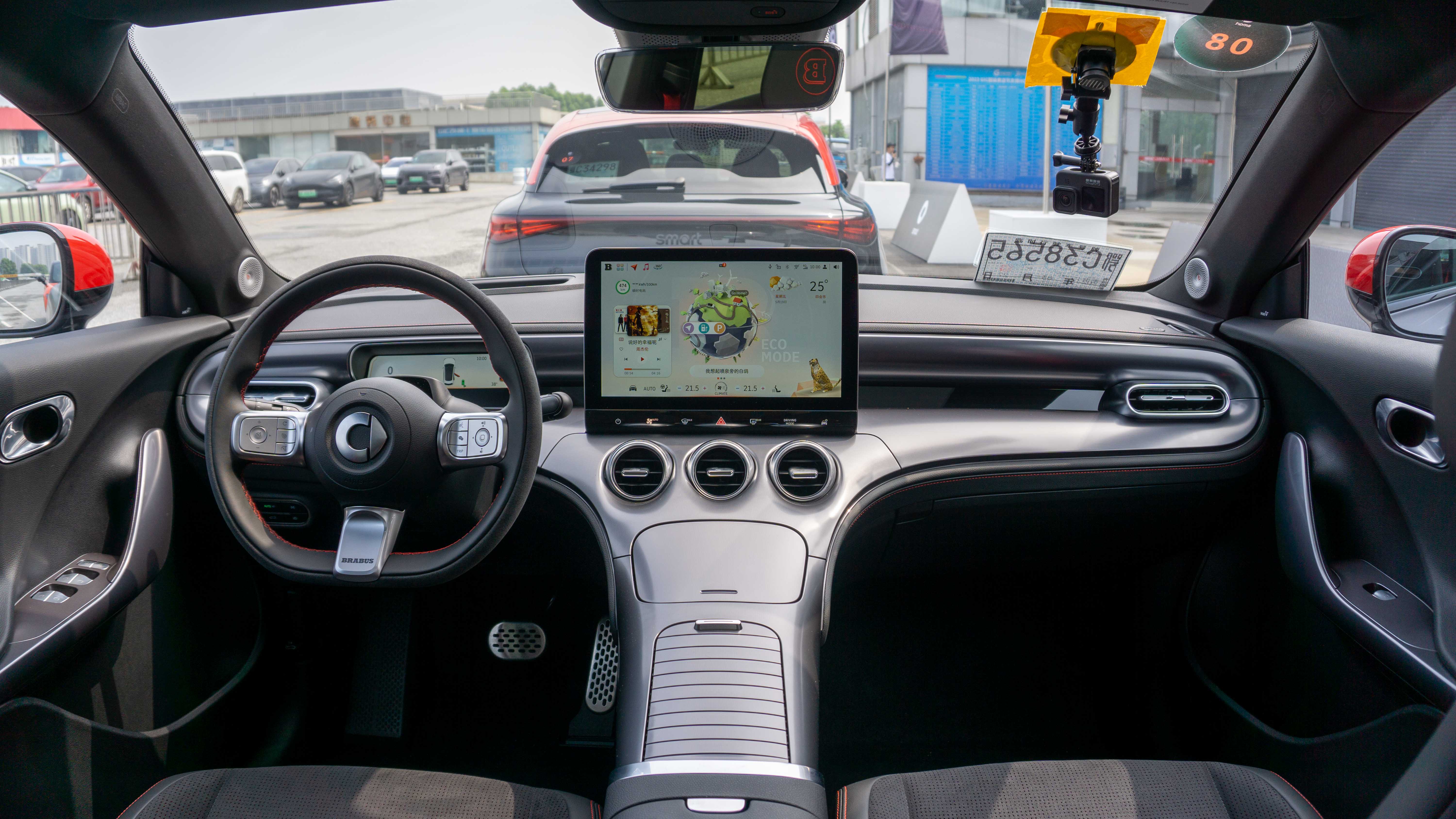
The overall interior design is mostly unchanged from the Sprite #1, featuring a T-shaped cockpit layout, a 12.8-inch center display, a 9.2-inch digital instrument cluster, and a 10-inch HUD.
Upon closer inspection, subtle changes are apparent, such as the redesign of the center console’s air vents from two elongated ones to three circular ones, which resemble the style found in the AMG GT.
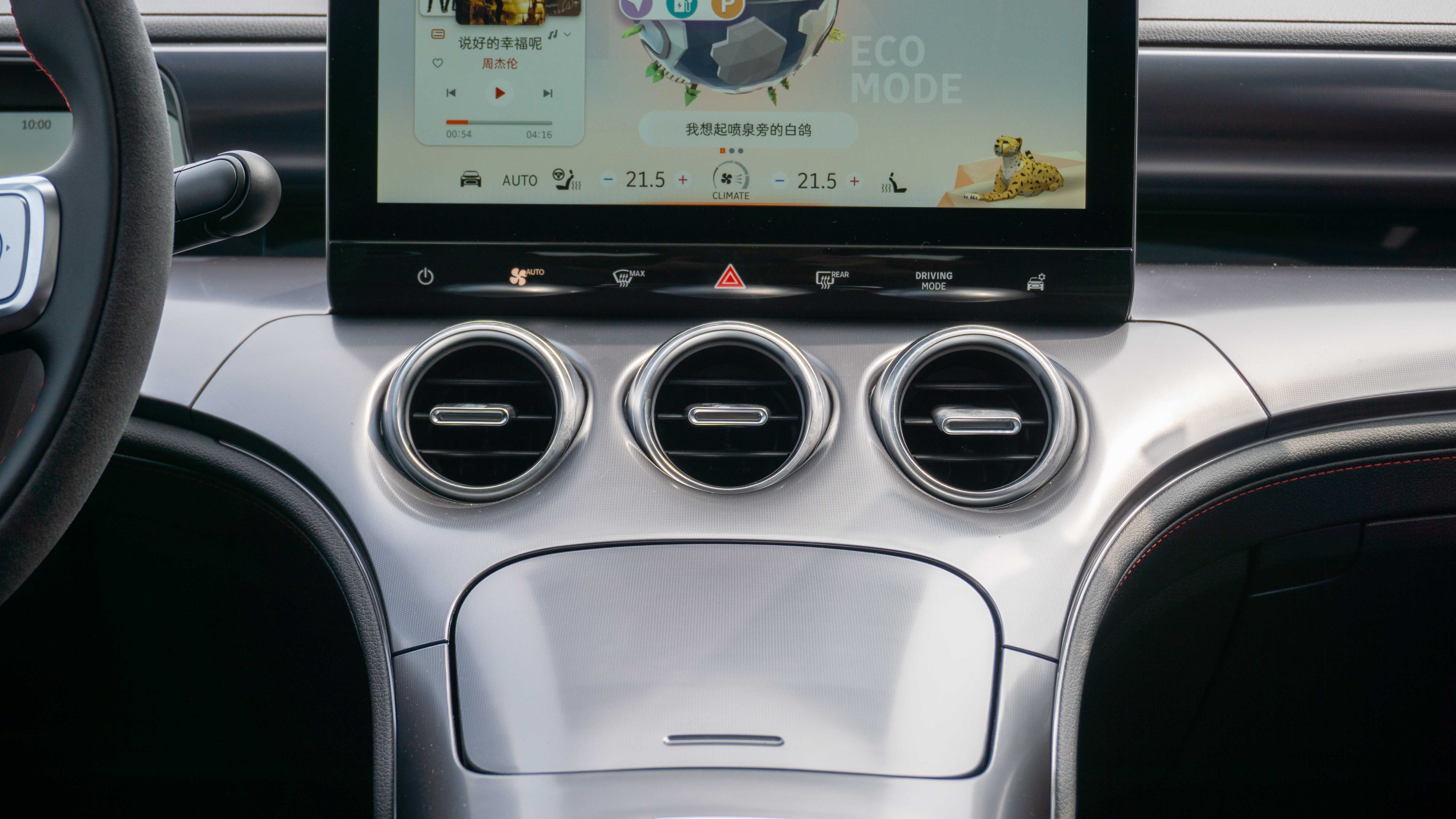
The smart Sprite #3 also features integrated bucket-style front seats that exude an aggressive aura. In the BRABUS edition, the seats are upholstered in Microfiber suede with meticulous red lining visible through perforations.
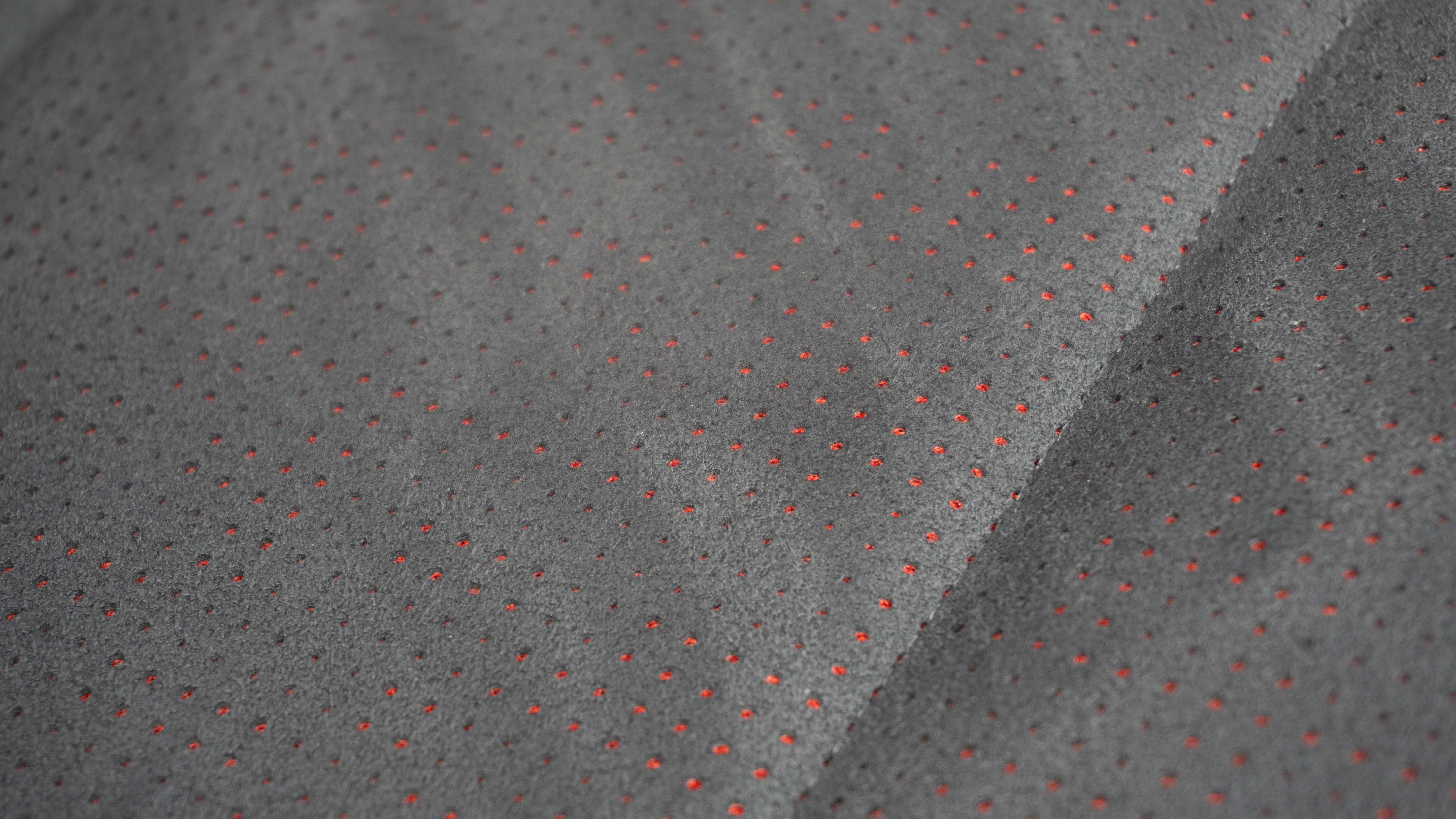 Regardless of which version you sit in, the fillings are quite firm, providing excellent support, including the seat cushions that use large wings. Additionally, the Microfiber suede-like material almost keeps the driver fixed to the seat.
Regardless of which version you sit in, the fillings are quite firm, providing excellent support, including the seat cushions that use large wings. Additionally, the Microfiber suede-like material almost keeps the driver fixed to the seat.
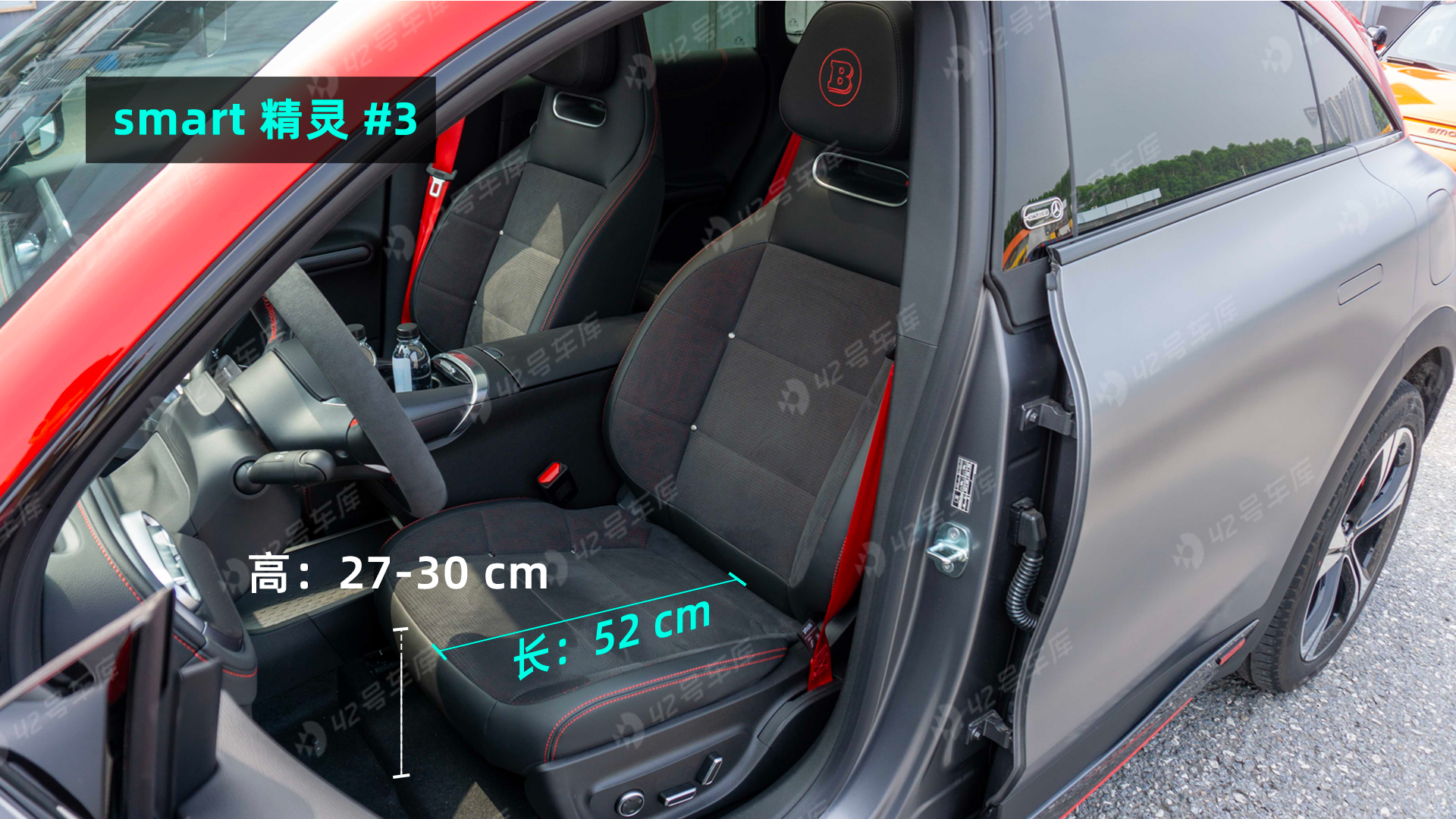
Moreover, the BRABUS embroidery on the seats of the Smart #3 further enhances its combat feel.
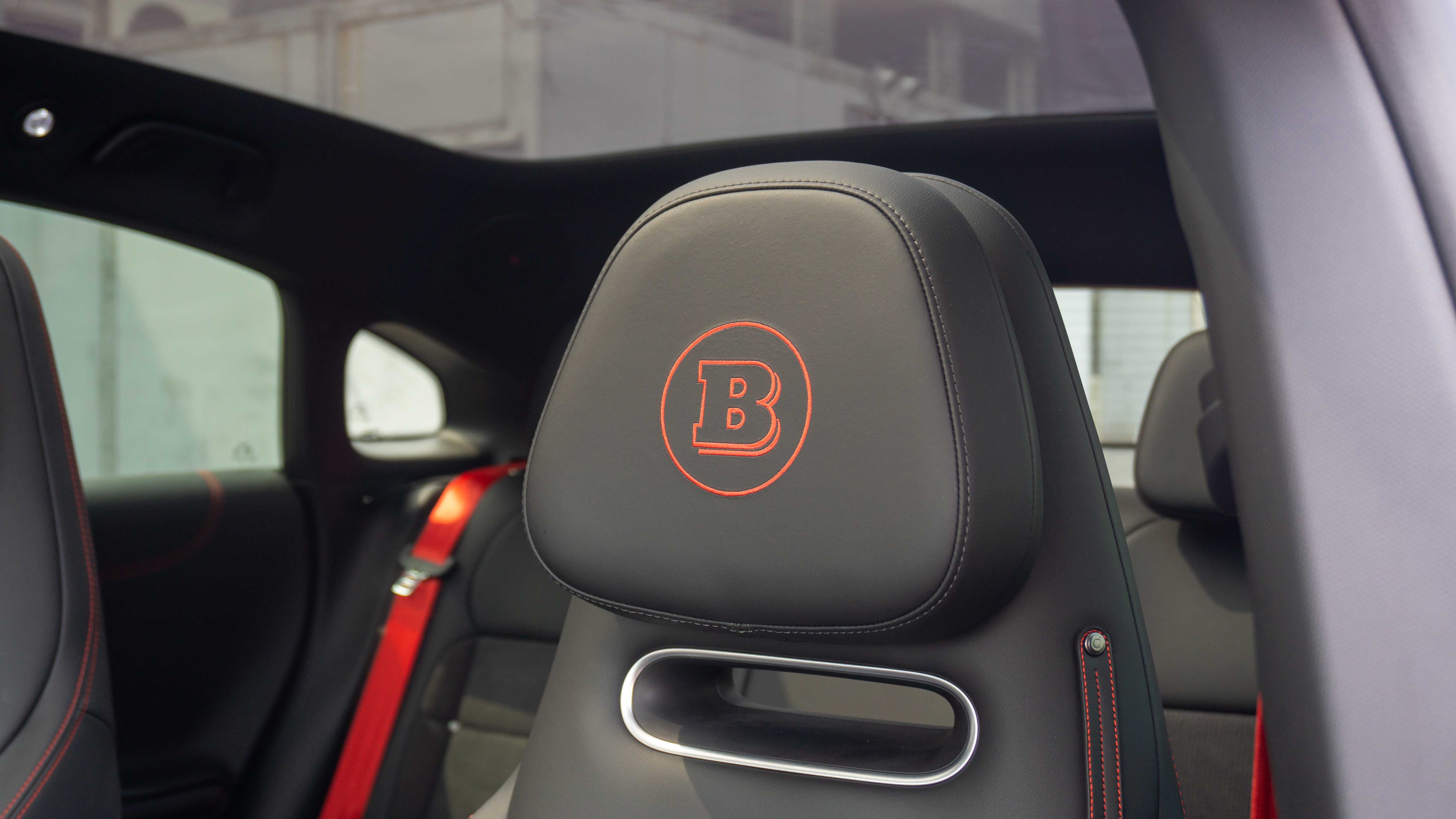
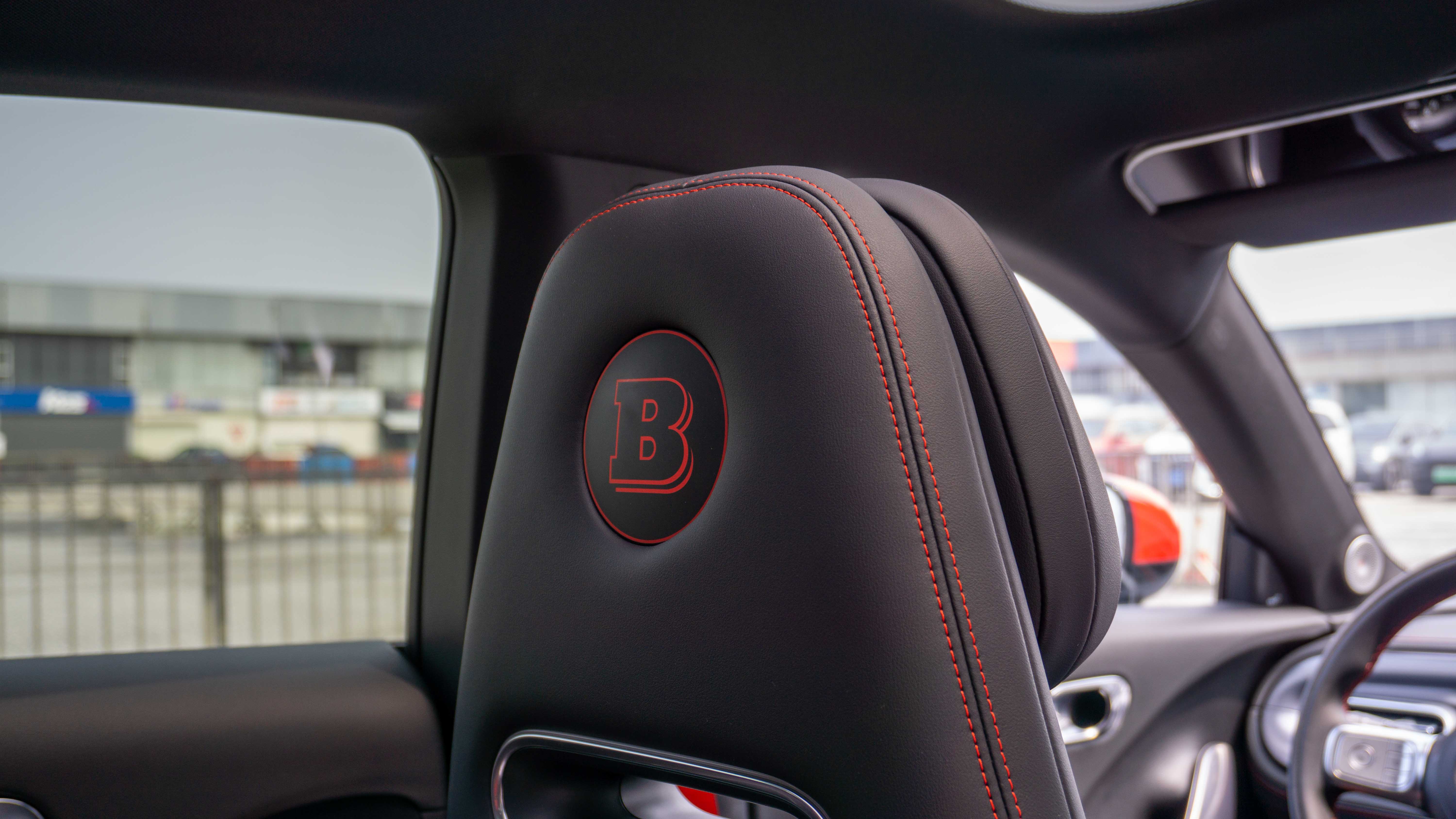
Another interesting point is that there is a leather strap on the left side of the vehicle seats, commonly seen in convertibles to secure seat belts. It’s surprising to see this design used in the Smart #3 since it doesn’t serve a practical purpose here. Does this imply that a convertible version of the Smart series is coming soon?
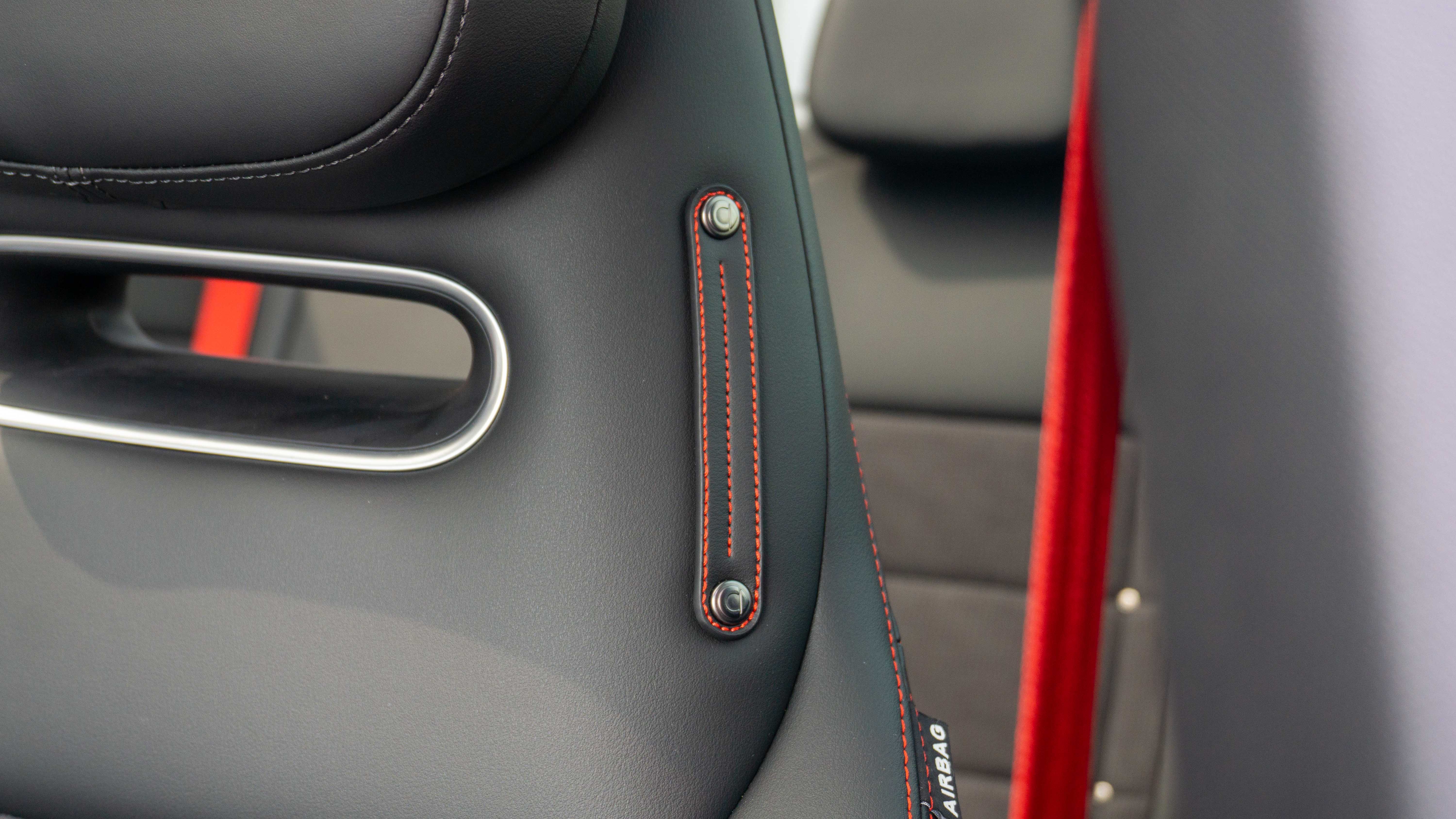
The BRABUS version comes with red seat belts, stitching, Alcantara steering wheel, beats audio system, and a wireless charging pad as standard, all without a difference.
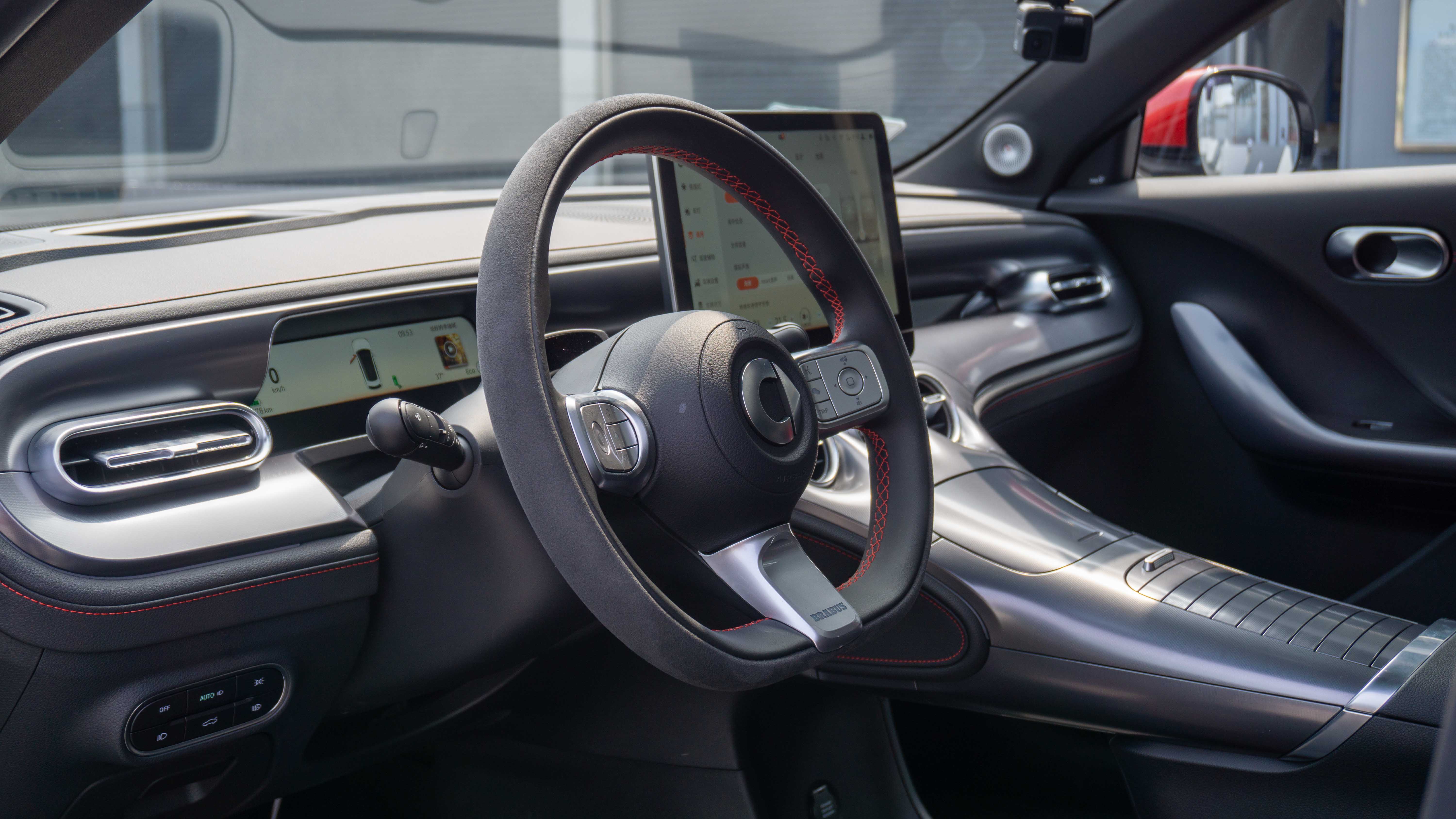
However, the center console still uses a large amount of hard plastic while the armrests and footrests only have soft-touch material, all despite a price tag approaching 300,000 RMB. This is a bit hard to justify.
One interesting aspect of the car’s infotainment system is that the voice assistant has changed from a fox to a leopard, seemingly upgrading its aggressiveness. The leopard’s style matches well with the Smart #3.
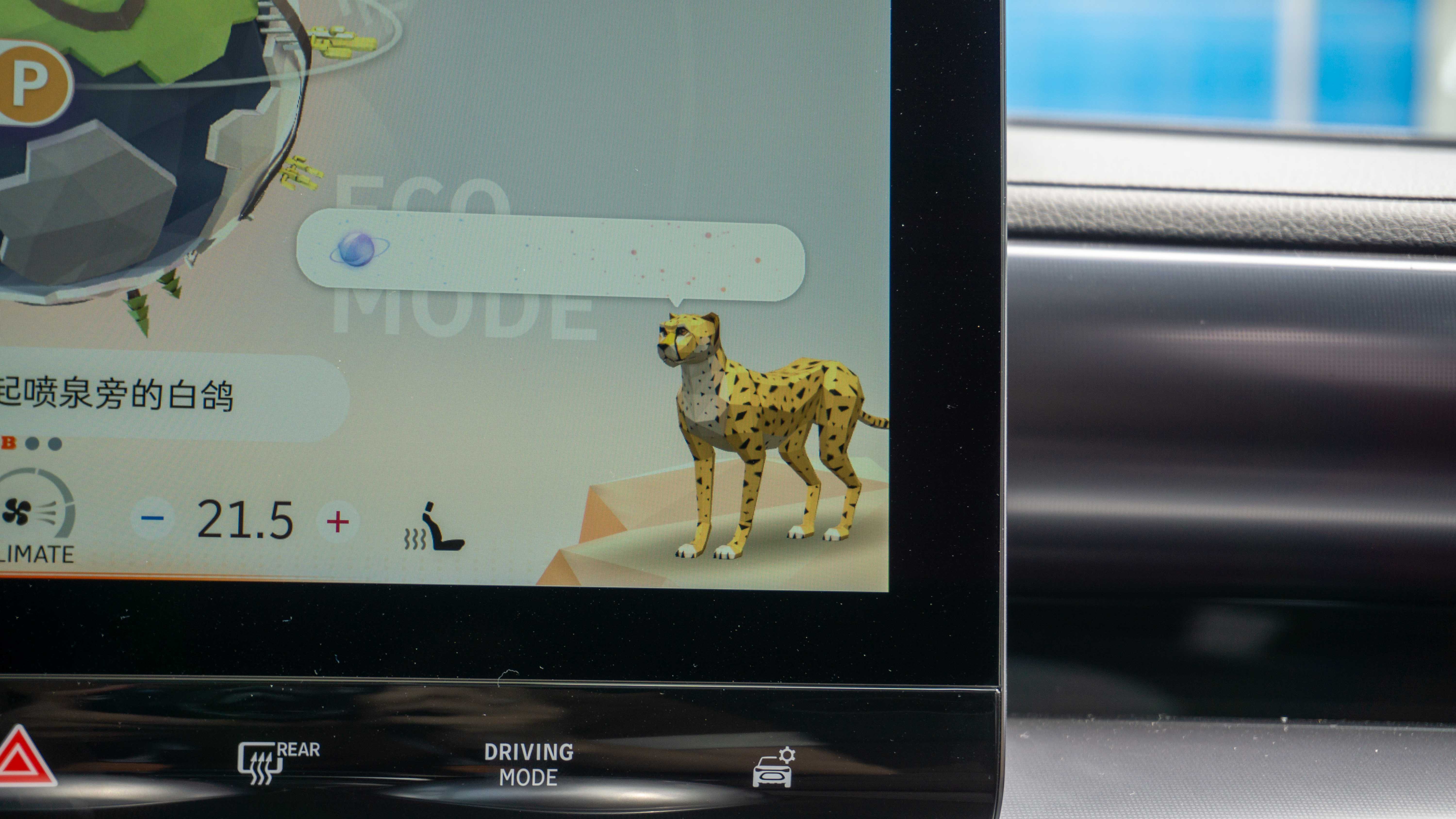
This time, Smart has also added an ejection mode to the #3. Deeply pressing the accelerator will prompt sound waves, gauge animations, and ambient lighting inside the vehicle to create a tense atmosphere, maximizing the excitement of breaking 100 km/h (62 mph) in just 3.6 seconds.
Track-Ready Pocket Rocket
Since the atmosphere of the Smart #3 is already set, it would be rude not to hit the race track and take it for a few laps.
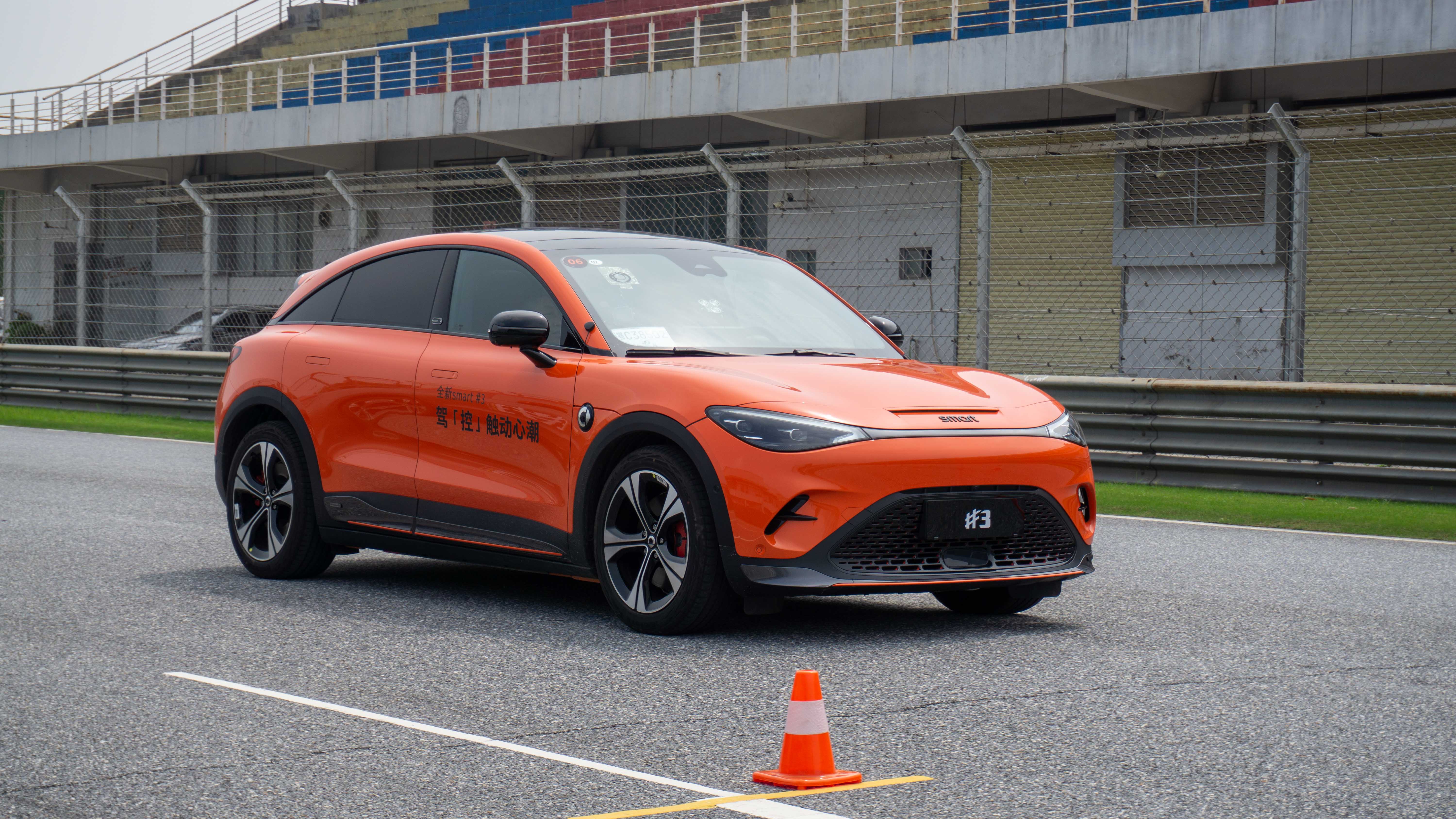 The Pulse and BRABUS versions of the smart elf #3 both have a dual motor system with a total output of 315 kW. In BRABUS mode or sport mode, the 0-100 km/h acceleration can reach 3.6 seconds in launch mode, which confirms its status as a true pocket rocket.
The Pulse and BRABUS versions of the smart elf #3 both have a dual motor system with a total output of 315 kW. In BRABUS mode or sport mode, the 0-100 km/h acceleration can reach 3.6 seconds in launch mode, which confirms its status as a true pocket rocket.
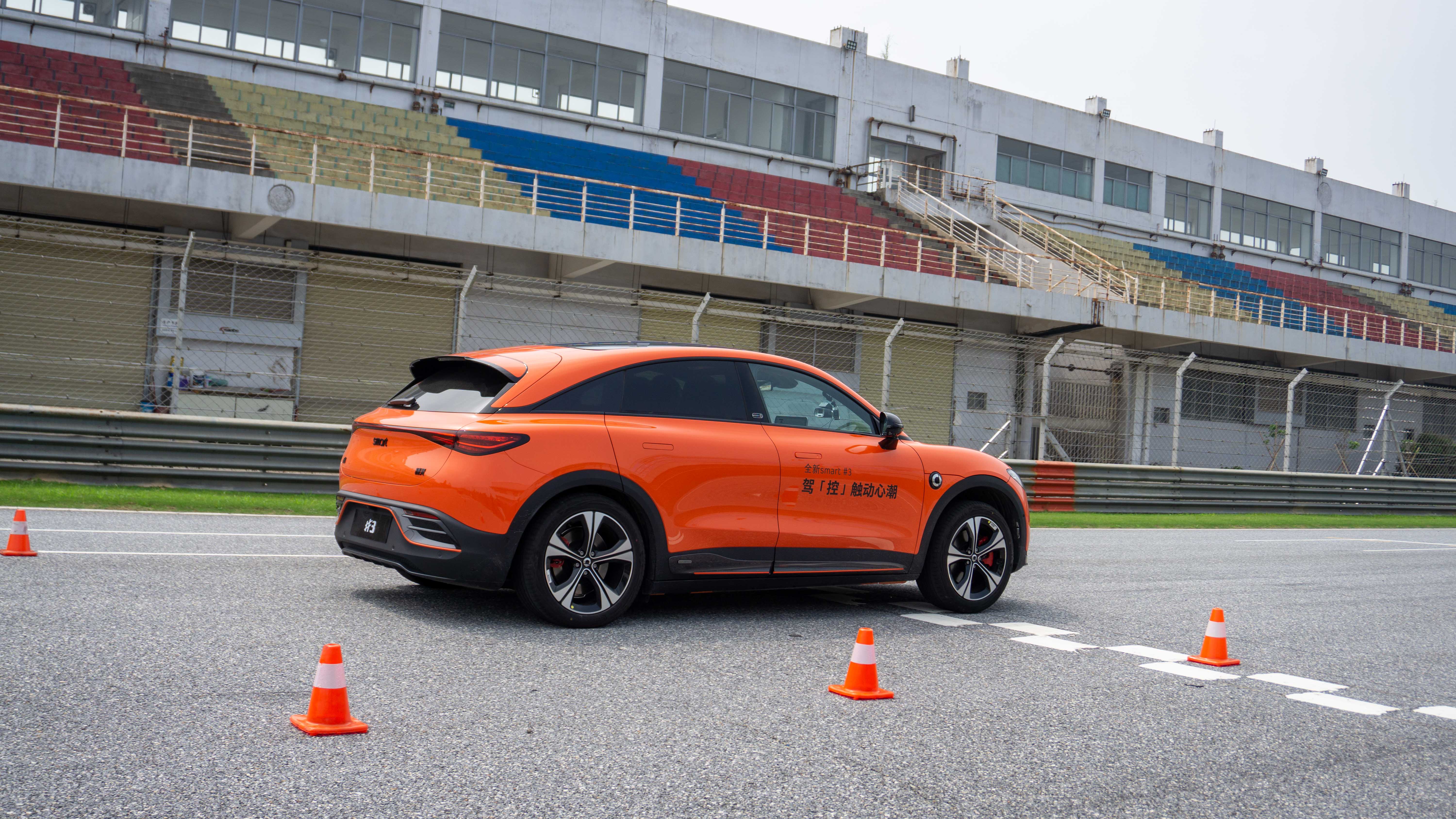
In single-person launch mode, it achieves a 3.7-second acceleration time, with a noticeable pushback feeling and no tire slippage, and can maintain this speed up to 100 km/h and beyond, accompanied by the choice of four simulated sound waves in the BRABUS version. It’s worth mentioning that launch mode has a scoring system, with Perfect and Good ratings.
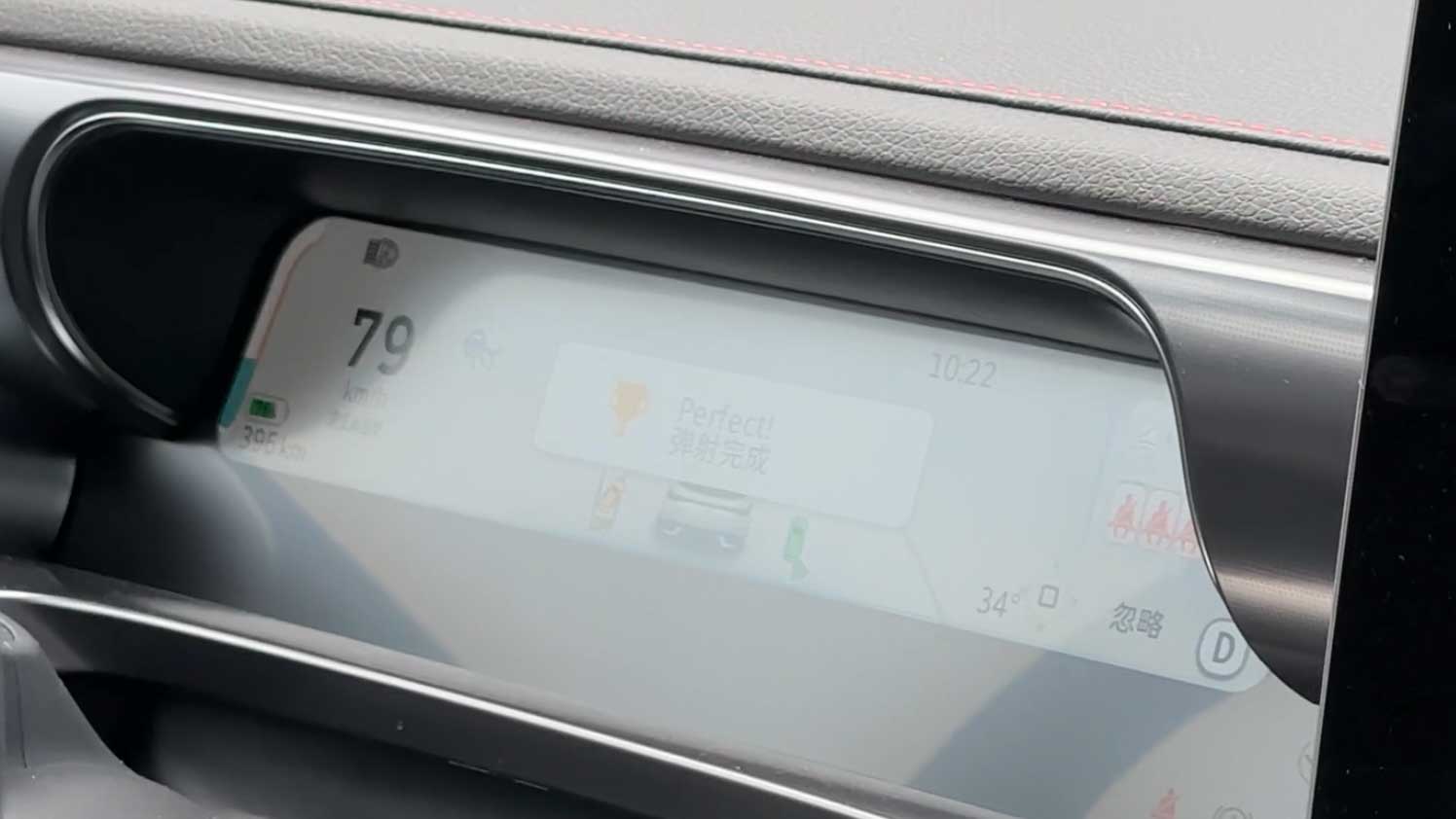
Surprisingly, even with three adults onboard, it can still achieve a 4-second acceleration. Brake test was also conducted, and the braking force was even and linear – even when the ABS intervened, there was no significant feeling of bouncing. From the outside view of the test drive, the car’s body attitude is well controlled, even during the intense 3-second acceleration and 36-meter braking.
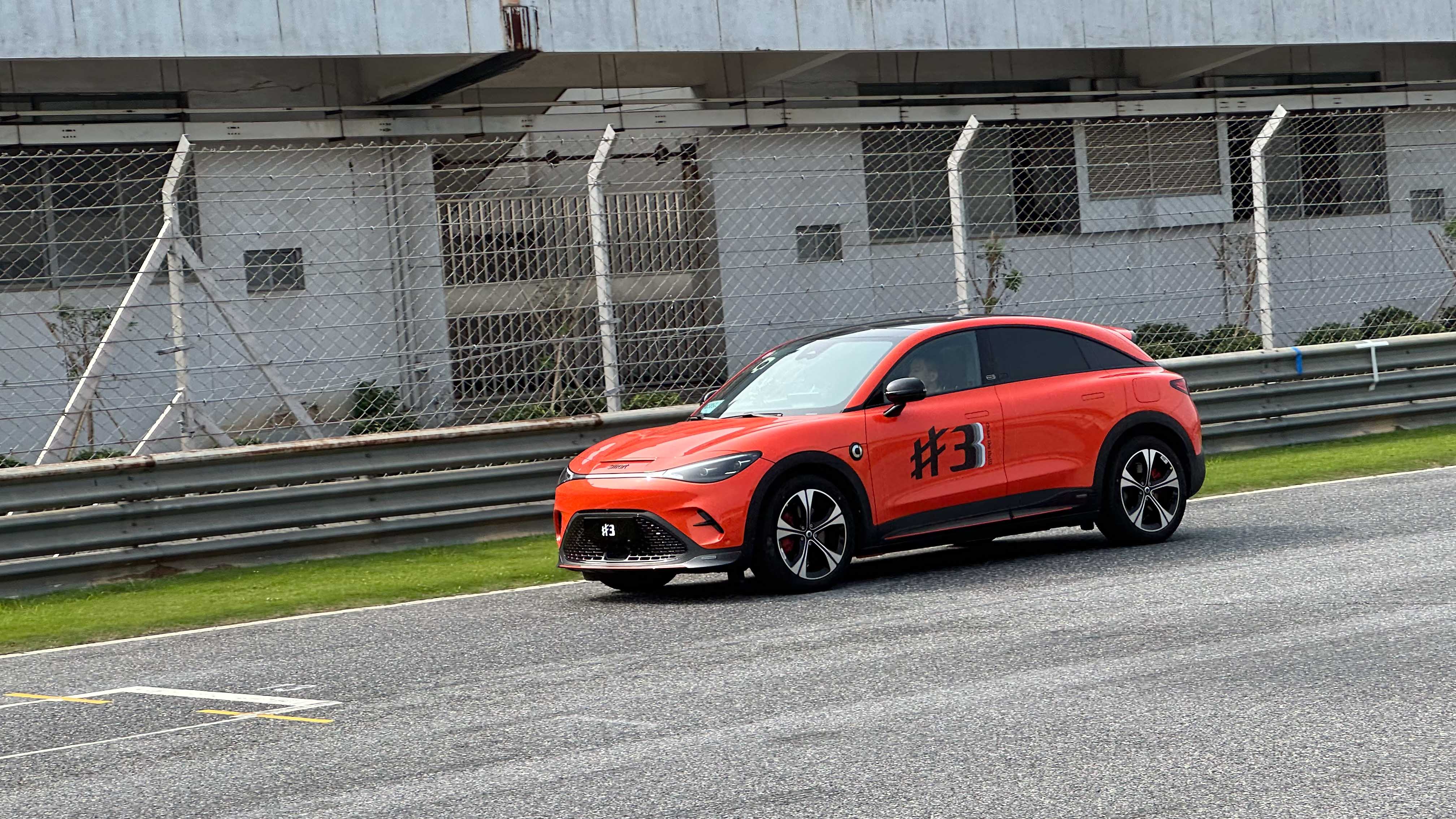
When thrown into a corner, the smart elf #3 has responsive handling. In balanced mode, there’s a slight sticking sensation to enhance the sportiness.
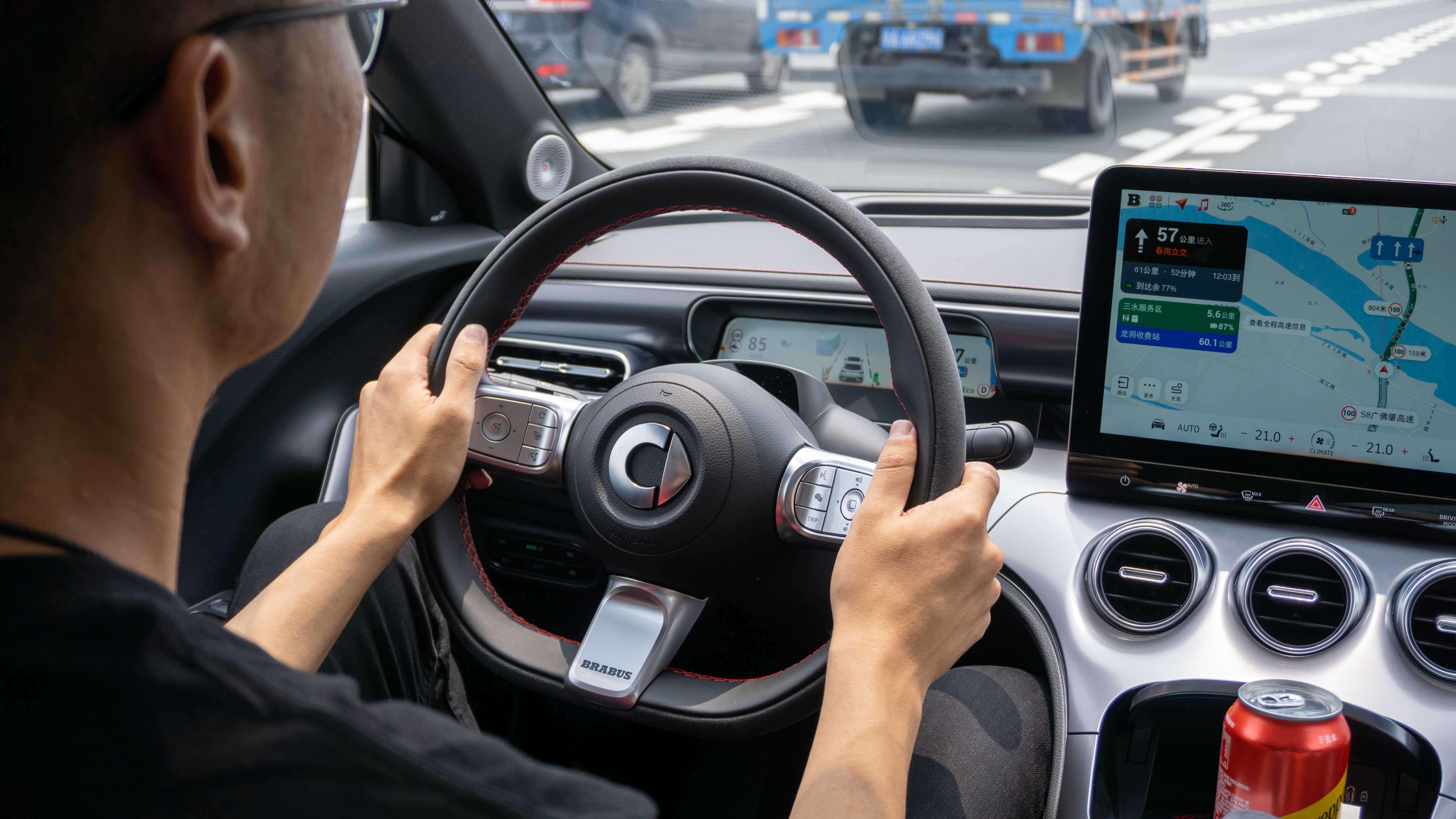
On corner exit, the front of the car naturally follows the trajectory with the increasing return torque. The vehicle’s body roll performance is also commendable in corners, thanks to the trapezoidal chassis layout (front track width 1,581 mm, rear track width 1,594 mm), which makes the elf #3’s tail very obedient and willing to follow the front’s line in corners.
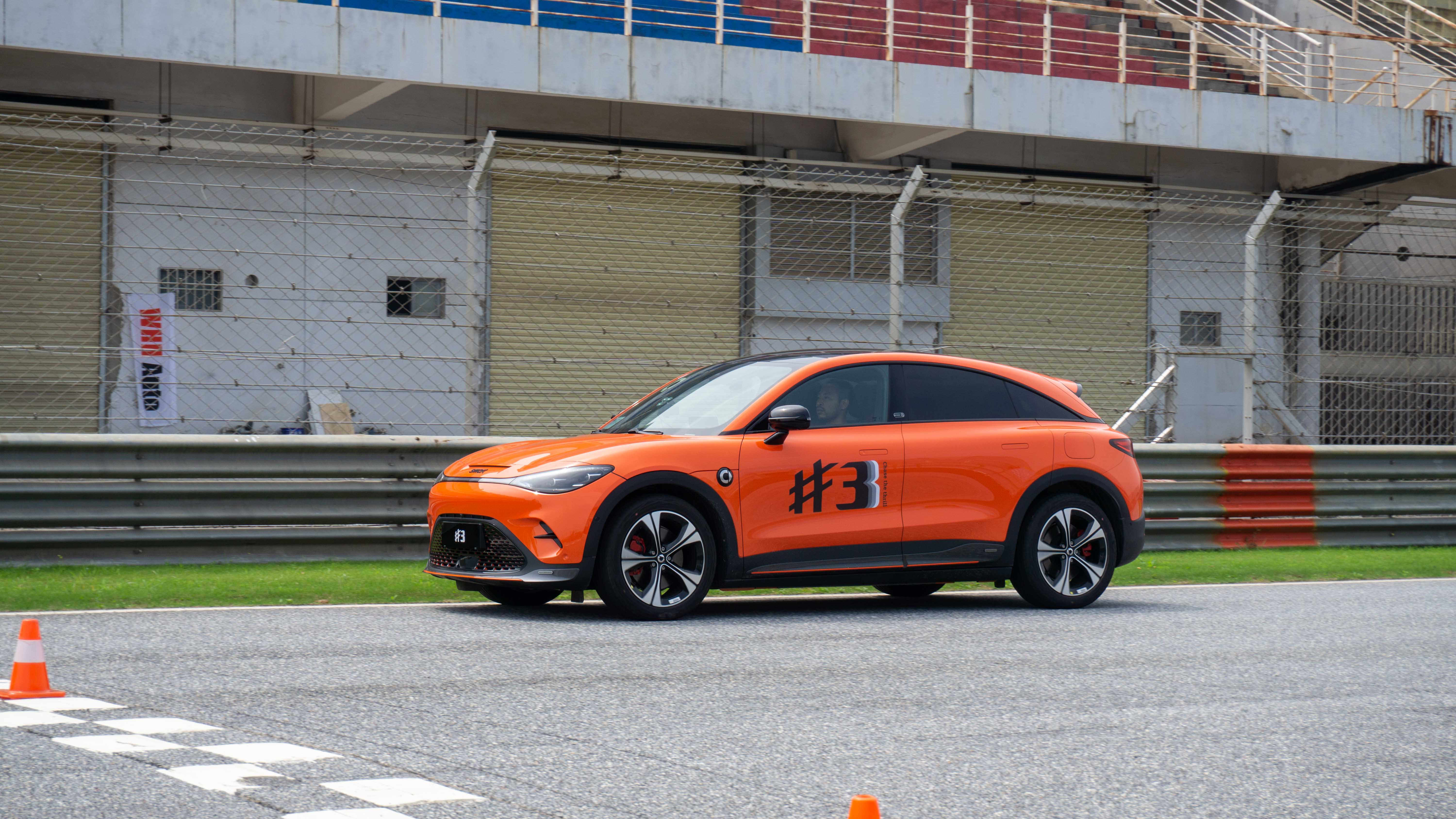
Even when I pushed the elf #3 to squealing tires in a corner, the power distribution of the dual-motor all-wheel drive system kept the car firmly on track, making it easy to maintain a good line and creating a beginner-friendly race car experience. In BRABUS mode, elf #3 allows a bit of tail slide, as long as you don’t press the gas pedal erratically, it remains stable.### Balanced for Daily Use
We believe that most owners of the Smart Sprite #3 won’t be racing on tracks every day, and will mostly use their car for daily commuting. During everyday driving, the Smart Sprite #3 remains easy to handle. With the automatic steering effort, the low-speed steering is very light, catering to the majority of female drivers, and the heavier high-speed steering ensures stability and controllability at high speeds.

The Smart Sprite #3’s suspension tuning embodies a standard sporty style, with stiff damping and crisp shock absorption. However, it’s not too bumpy for everyday use, retaining a reasonable level of comfort. When driving on elevated roads, the body’s motion is consistent with the road’s undulation. The consistency between the front and rear axles is also better than that of comparable small cars or SUVs.
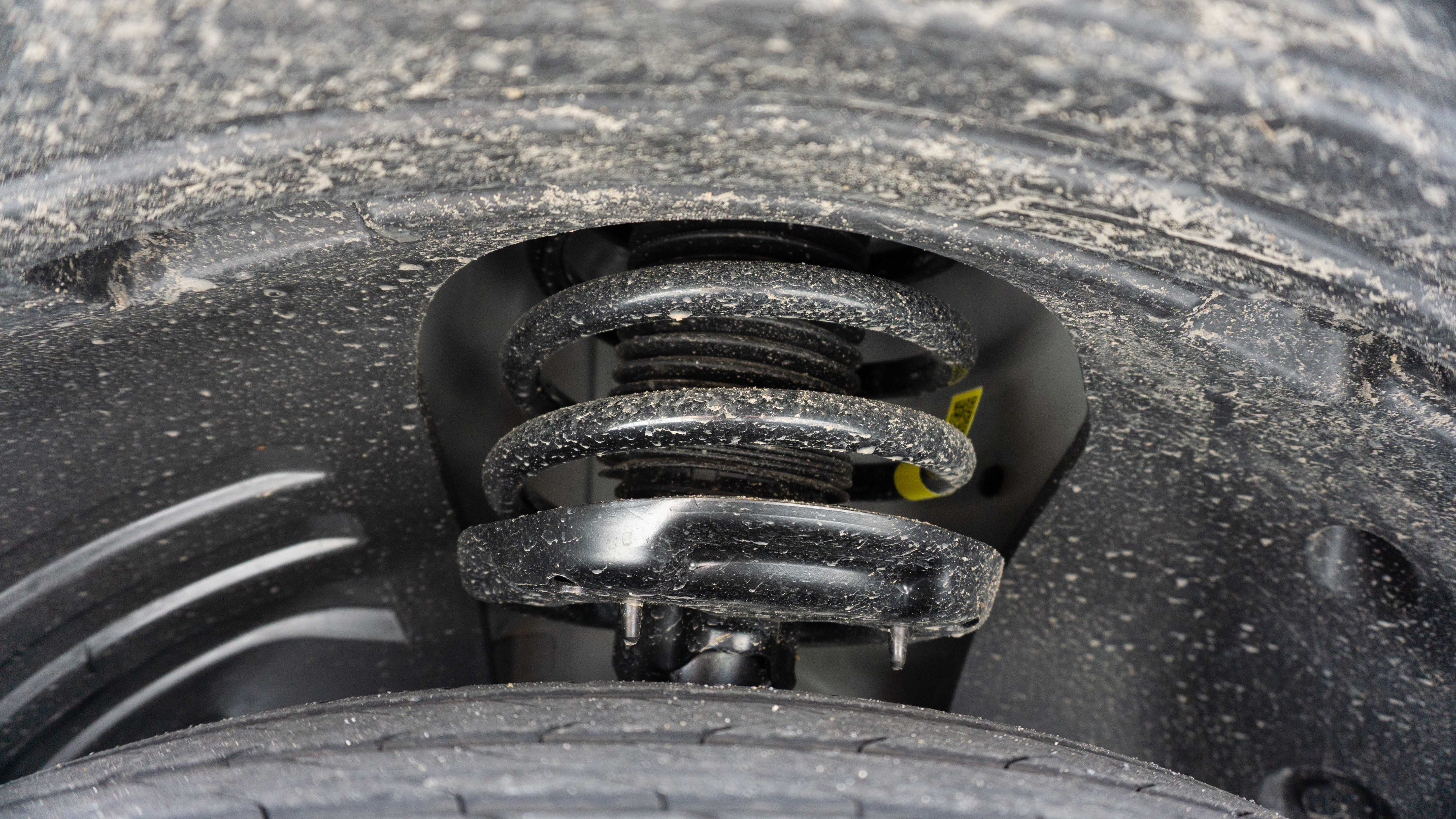
More Secure for Four-person Trips
Pure electric vehicles like the Smart Sprite #3 are mainly used in urban settings, and their use is primarily focused on accommodating 1-2 passengers. Even though small cars like these rarely operate in fully-loaded situations, compact SUVs still tend to take rear passenger needs into account.
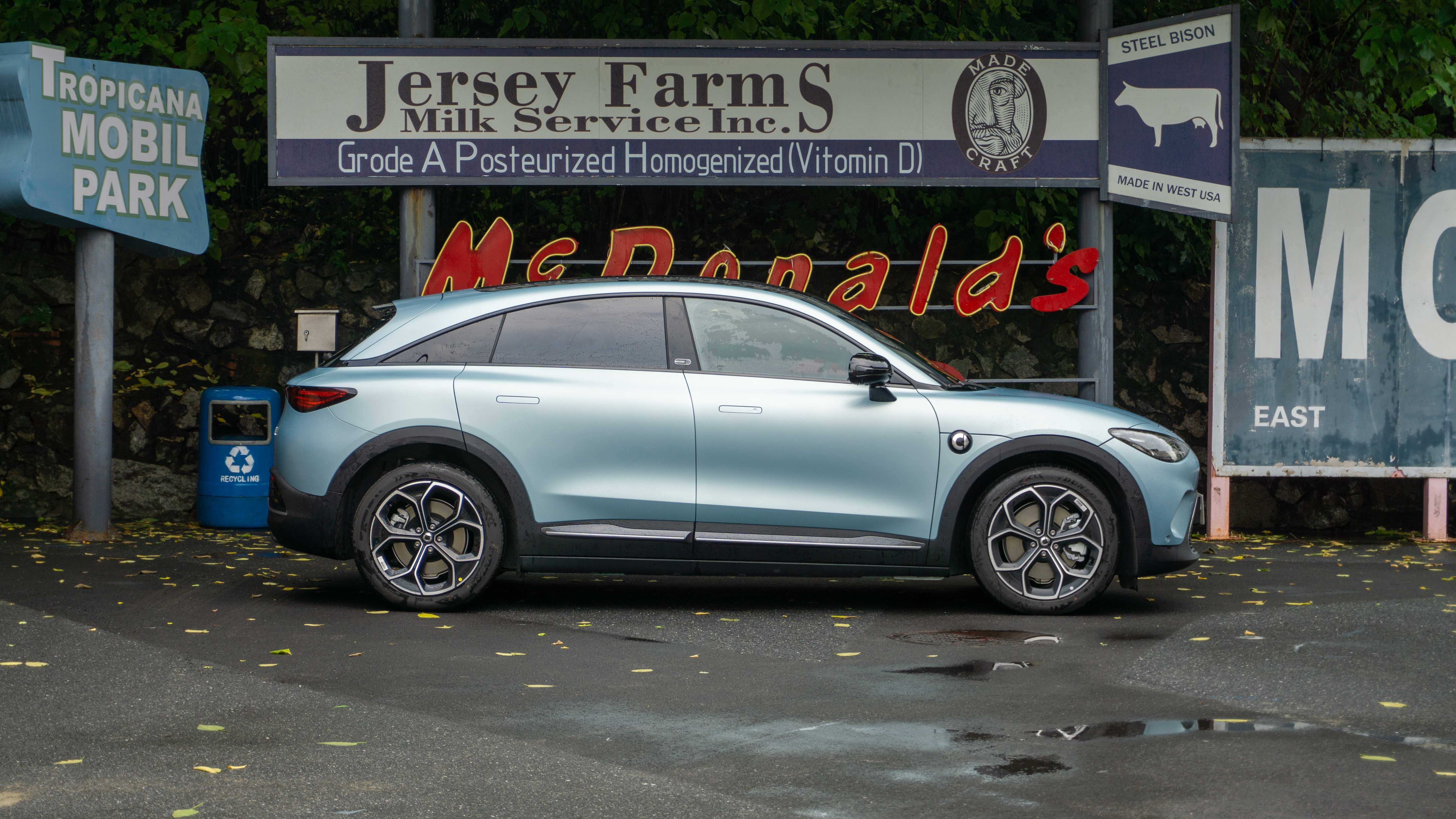
I’m 175 cm tall and weigh 68 kg. When the front seat is adjusted to my preferred driving position, there is still a hand-width’s space for legroom in the rear, and a fist and two fingers’ worth of headroom.
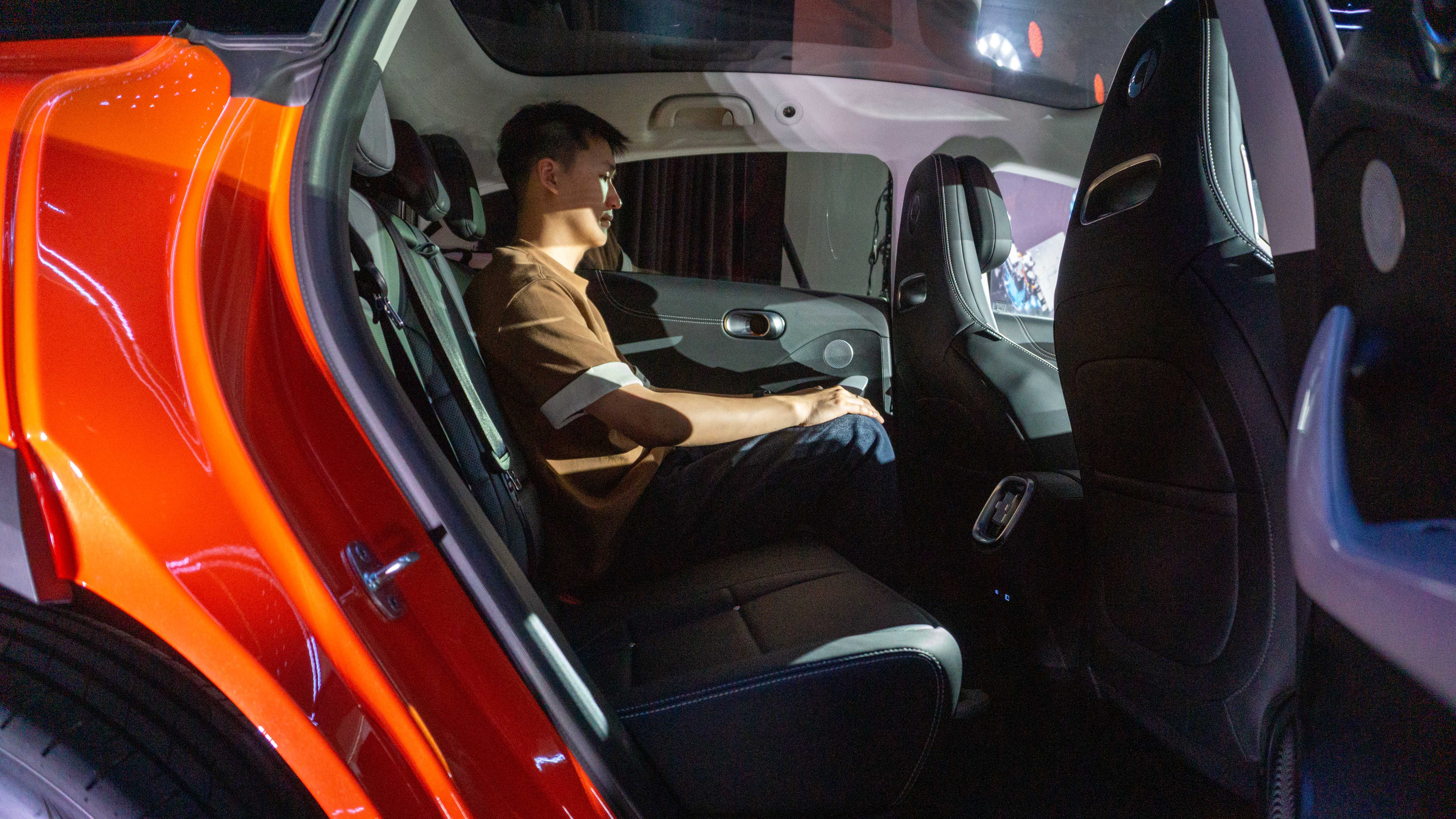
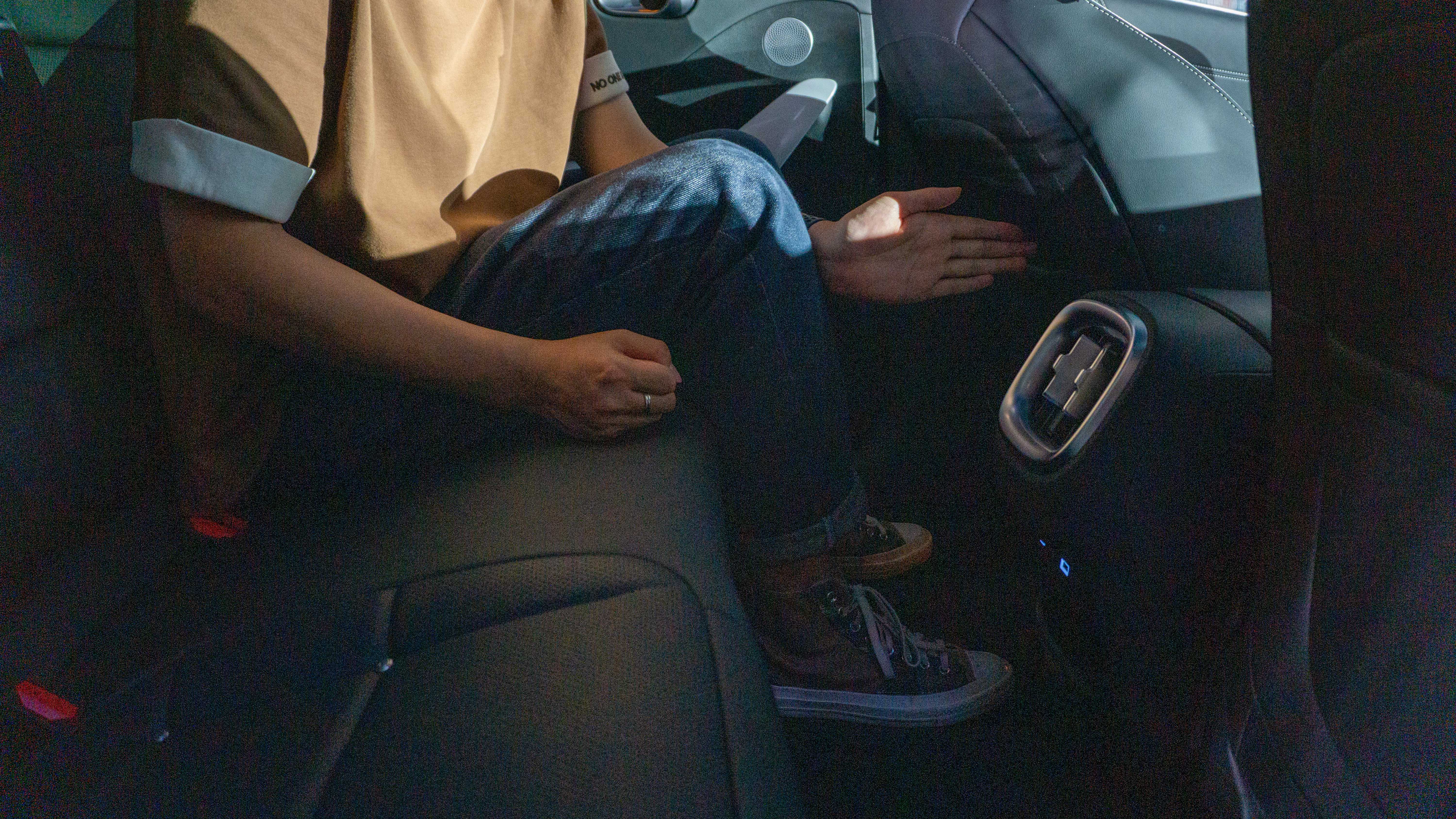
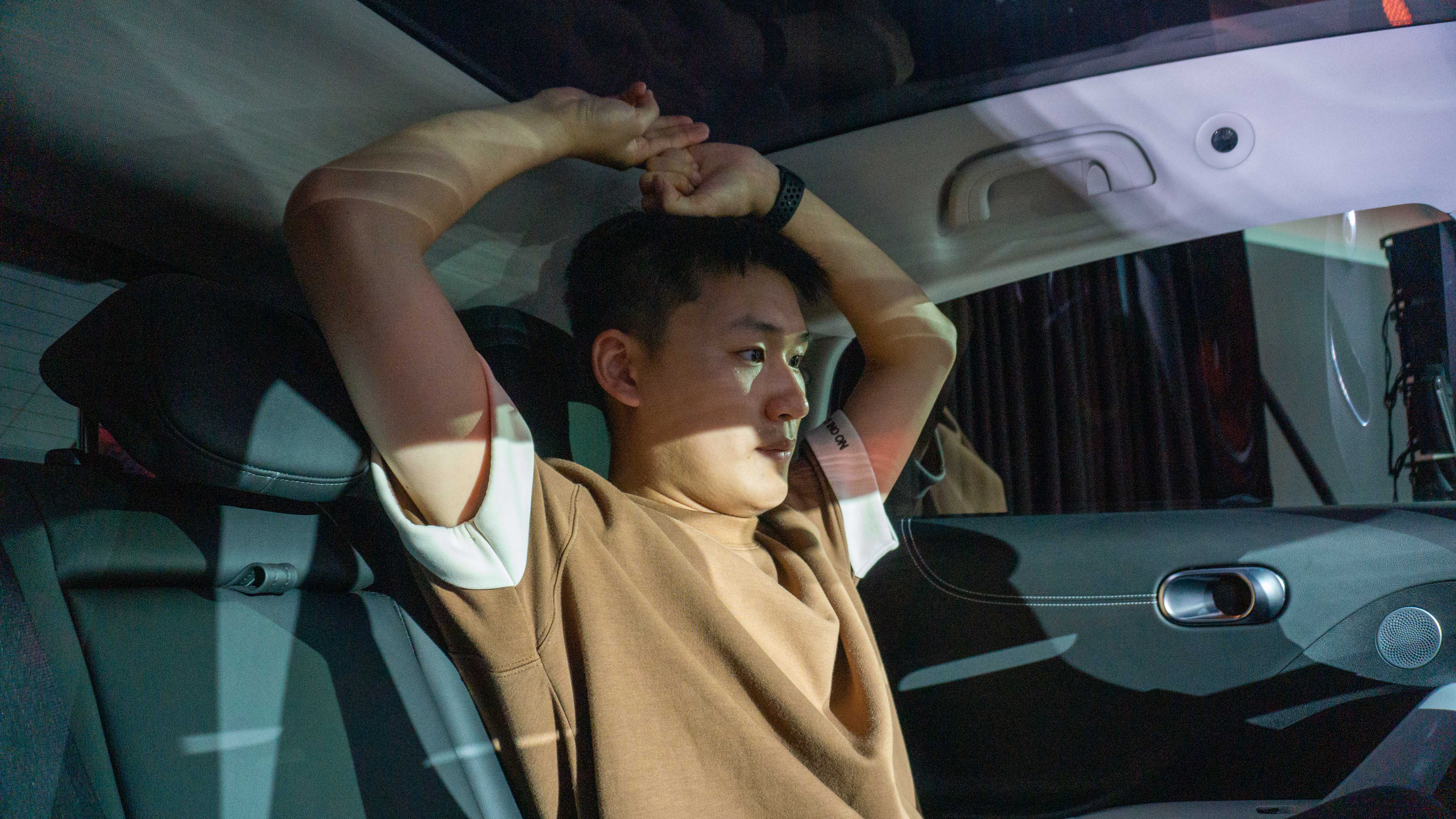
Although the Smart Sprite #3 has a longer body and wheelbase compared to the Sprite #1, it moved the rear seat cushion backward to ensure rear passenger comfort with its sloping roofline. This ensures overall seating space, but the Smart Sprite #3’s seat cushion cannot be adjusted forward or backward – it’s fixed in place.
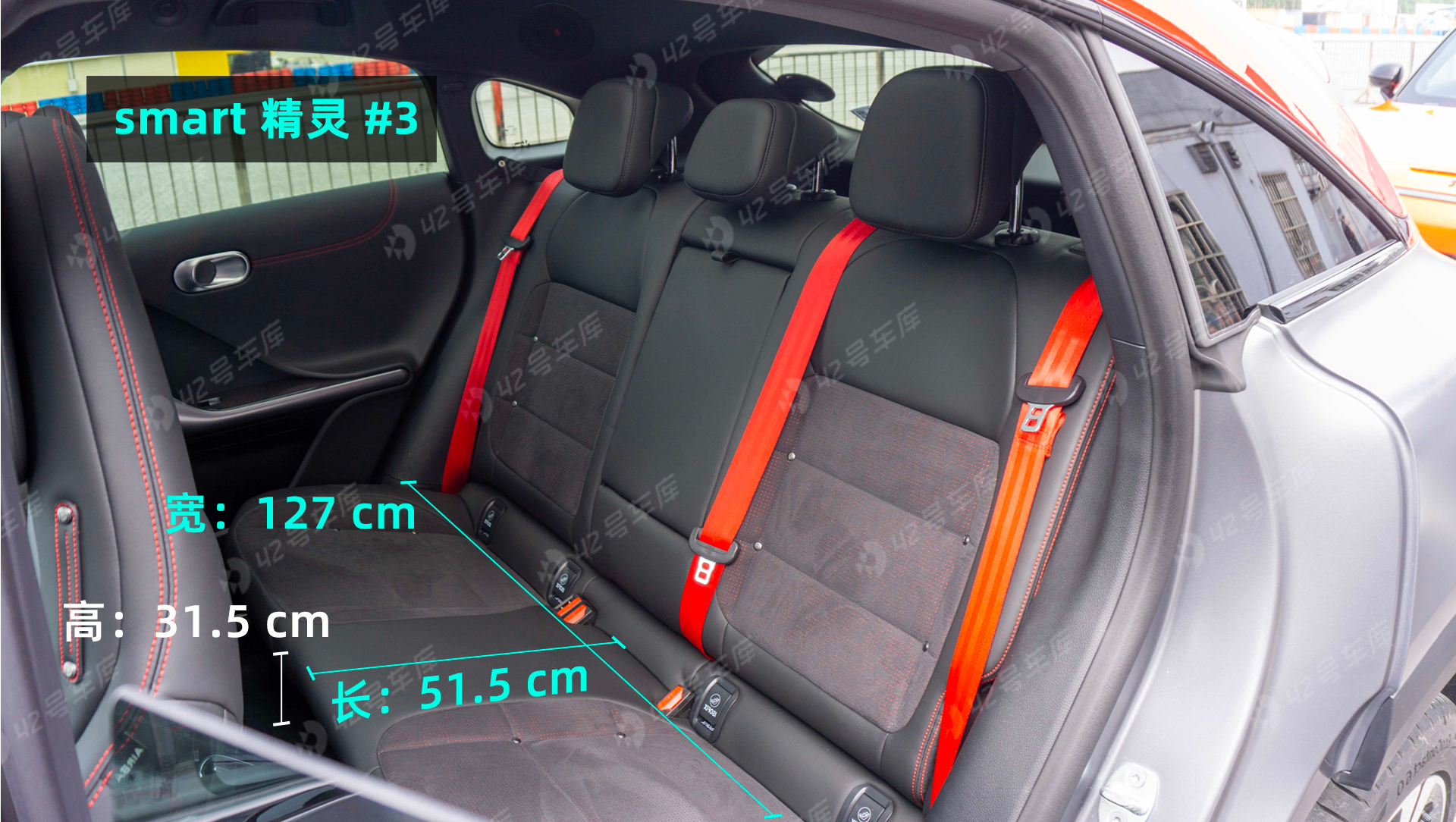 During the urban test drive, I also experienced the rear seat comfort of the Smart Elf #3. The vehicle’s seat cushion is slightly hard, and the upward angle of the cushion is not obvious, which provides mediocre thigh support in a normal sitting position. However, the lumbar support is adequate, ensuring a comfortable long ride. The rear seat width is only 127 cm, which might be uncomfortable for five passengers in the car.
During the urban test drive, I also experienced the rear seat comfort of the Smart Elf #3. The vehicle’s seat cushion is slightly hard, and the upward angle of the cushion is not obvious, which provides mediocre thigh support in a normal sitting position. However, the lumbar support is adequate, ensuring a comfortable long ride. The rear seat width is only 127 cm, which might be uncomfortable for five passengers in the car.
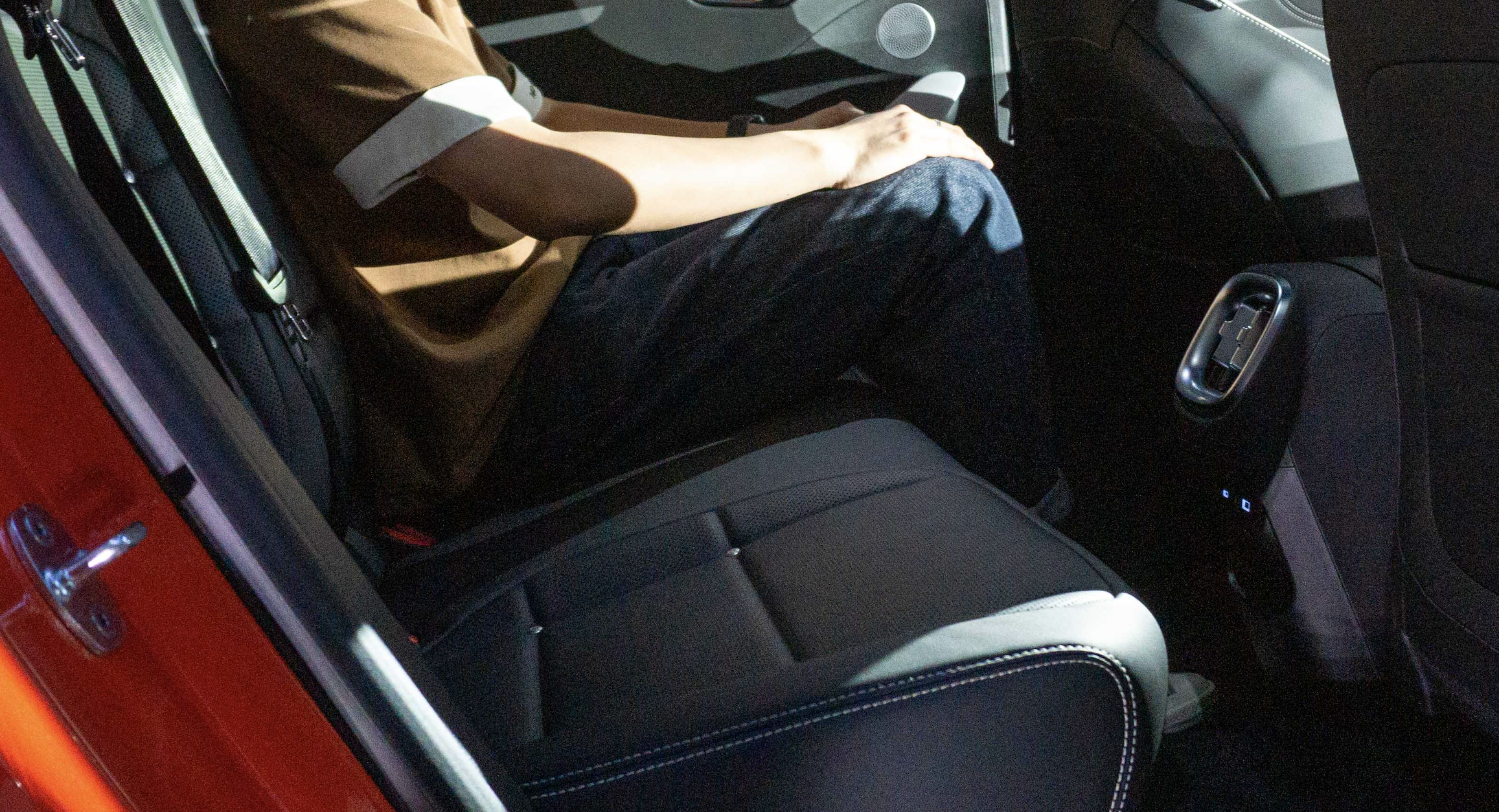
The trunk space is not too spacious, being 82 cm deep and 99 cm wide, only sufficient for daily short-distance travel luggage. For larger items, you can fold down the rear seat backrest to expand the space.
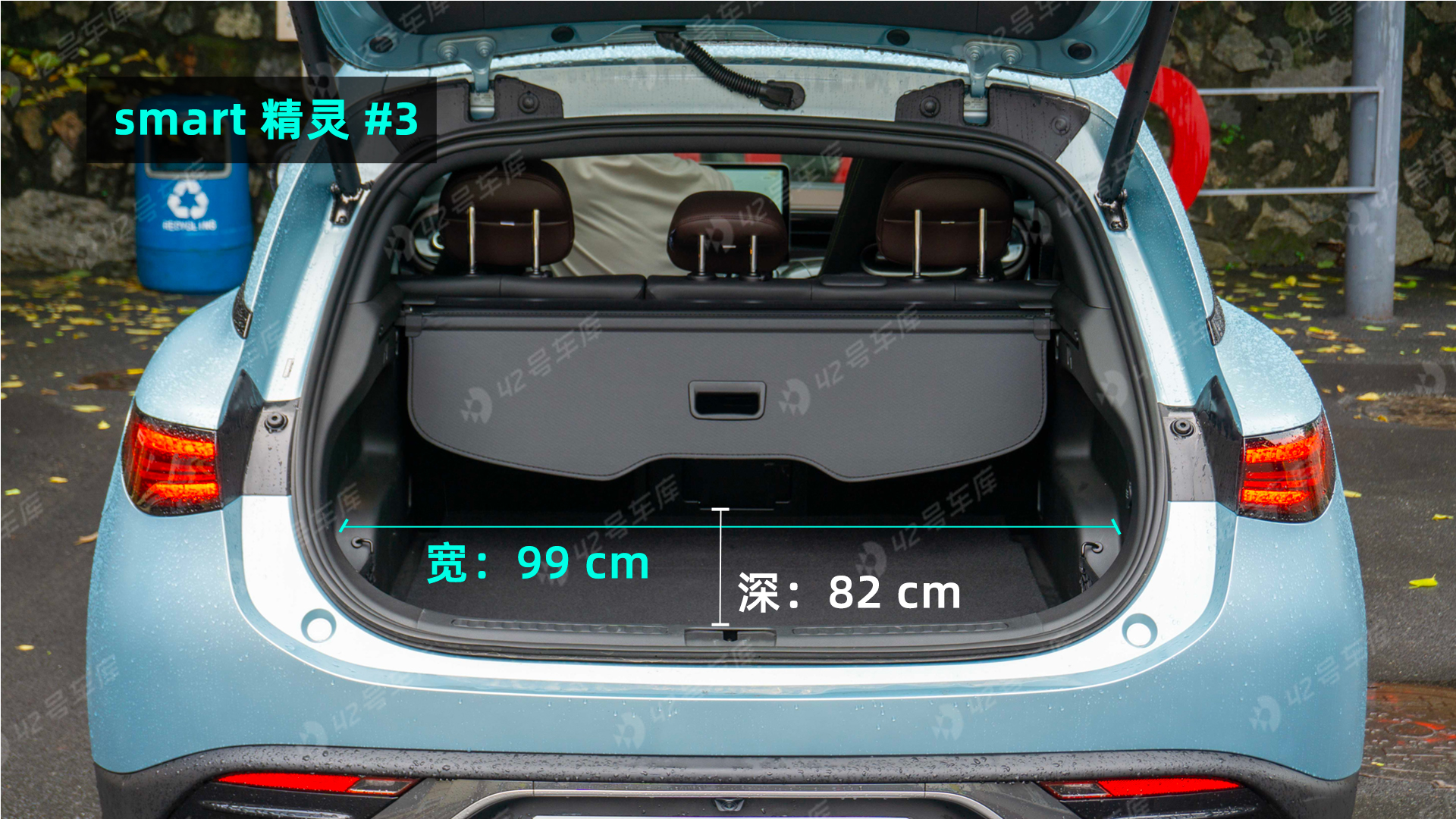
Overall, while maintaining its stylish design, the Smart Elf #3 doesn’t compromise its rear seat comfort. With this car, you can comfortably take four passengers for a smooth ride, offering a blend of individuality and practicality.
In Conclusion
The Smart Elf #3 will go on sale in June and begin deliveries simultaneously. With this interesting little car reigniting my passion for ultimate small roadsters, I’m eagerly waiting for the pricing details. The price of the Smart Elf #1 ranges between 179,000 and 245,000 yuan, and the Babos Edition Smart Elf #1 has an upper limit of 279,000 yuan. Products from the same platform include the Zeekr X, priced between 189,800 and 229,800 yuan.
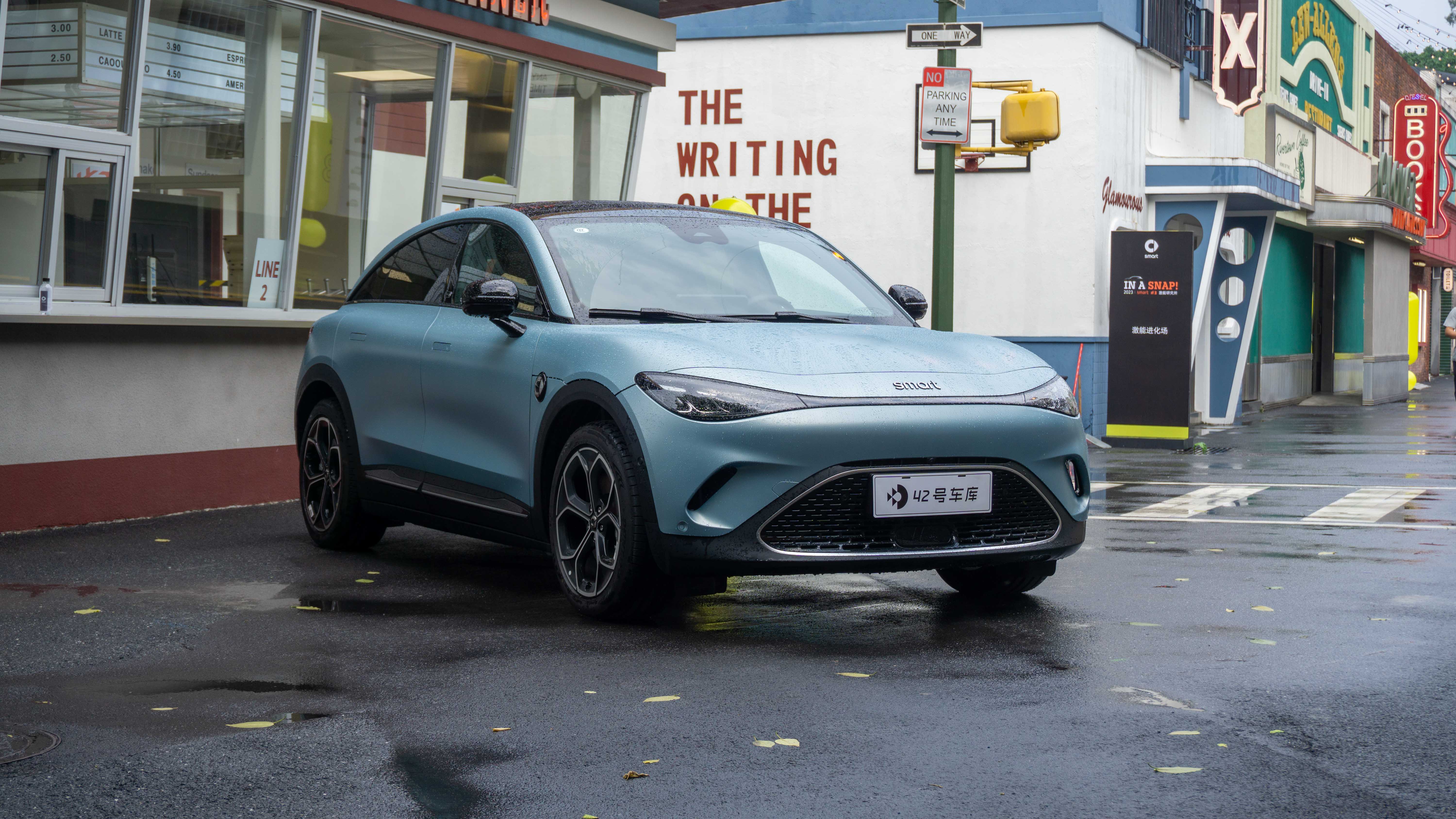
For the more refined and upscale Smart Elf #3, some premium pricing is to be expected. If priced similarly to the Elf #1, the Elf #3 could become a hit among niche models, as it is rare to find a vehicle that is fun to drive, visually appealing, and maintains brand characteristics in the current pure electric market. From a personal perspective, I hope the Elf #3 retains its characteristics as part of its “value for money” offer, allowing buyers to enjoy a unique vehicle on the road.
This article is a translation by ChatGPT of a Chinese report from 42HOW. If you have any questions about it, please email bd@42how.com.
